What are the consequences
of celebrating the Anthropocene?
Keywords:
Anthropocene
Geological epoch
Celebration
Modern Western culture
Capitalism
Hedonism
Escapism
Sacrificing
Activism
Commemoration
Anniversary
Cultural perspective
Bachelor of Design thesis:
Manifest for the Anthropos
by Jordy Ringeling
[January, 2017]
Abstract It took the human species approximately 70 years to forever disrupt Earth’s carbon and nitrogen cycles, ocean chemistry and biodiversity. Each products of millions of years of evolution. The Industrial Revolution marks a point where our society began to control agriculture and cityscaping on a mass scale. We started altering our environments in a need to grow, and with this came pollution. So much, that geologists, archeologists and scientists are currently trying to persuade the International Commission on Stratigraphy to officially recognise our current era as the Anthropocene. The human agent catapulted our planet from the Holocene (that lasted for almost 12,000 years) to a new epoch, and ironically enough even proclaimed it our own.
The Anthropos as a geological force. The numbers are not lying and scientist have been able to convince most of us that climate change is real.
And this calls for action. In the past 10 years, a wave of myriad texts, art projects and interventions by creatives that tackle the issue emerged. All with a different approach and vision, but most of them agree that the Anthropocene is not something to be proud of.
Yet, is it not an enormous achievement that the human species have been able to alter Earth’s entire atmosphere in such a short period of time? The thesis takes an unconventional standpoint and looks for ways to glorify our wrongdoings that lead to this global change, by celebrating the Anthropocene. This shift in perspective helps position the role of societies that are at the centre of the issue and looks critically at habits that developed in Western culture.
Introducing the problem, the thesis describes how ecosystems have changed over the past hundred years and how environmental organisations like The Club of Rome and Greenpeace have been fighting against climate change. They have made significant progress, but the opposing parties (oil companies, their CEOs and a big number of politicians) used their power to ever-expend our societies, depositing even more fossil fuels, causing more pollution. These parties benefit directly from the Anthropocene and the thesis proofs that through capitalism, all of Western society does too.
By looking at possible reasons to celebrate the Anthropocene, the thesis argues that the hedonist Western world uses celebration as an instrument to create escapism, in order to transcend the unpleasant realities of life. By doing so, they neglect a big portion of our species that, due to their economic position and cultural differences, are not able to participate in a variety of festive events, such as holidays and other celebrations fuelled by capitalism.
It compares indigenous rituals to contemporary holidays and concludes that Western societies are likely to endorse the celebration of climate change. This proposed event could possibly utilise the notion of celebration and our current social position, to create awareness and address the problem of climate change from a positive perspective.
To help visualise a celebration of such, various examples of how the arts is both passively and actively tackling the topic are given. The text explores unusual perspectives in movies that glorify industrialisation, the Church of Scientology and their bombastic visual language and The Voluntary Human Extinction Movement, which are praised for their alternative solution for the decaying of our planet.
Will we sacrifice our believes or even certain lives, if we celebrate this era? And why should the Anthropocene be glorified and not commemorated? Should the celebration be an anniversary? Should it call for action, create awareness? Or are we not the actors that should fight the Anthropocene in the first place?
The thesis does not provide a specific proposal for how the celebration of the Anthropocene must look like, but rather gives all the variables that could help envision how it could look like. Examples of parties and interventions both dealing directly and indirectly with climate change, provide arguments that support or rule out different scenarios, leaving it up for the reader to construct a possible premise.
Keywords:
Anthropocene
Geological epoch
Celebration
Modern Western culture
Capitalism
Hedonism
Escapism
Sacrificing
Activism
Commemoration
Anniversary
Cultural perspective
...The Great Introduction

GN-z11, a high-redshift galaxy found in the constellation Ursa Major, is currently the oldest and most distant known galaxy in the observable universe.
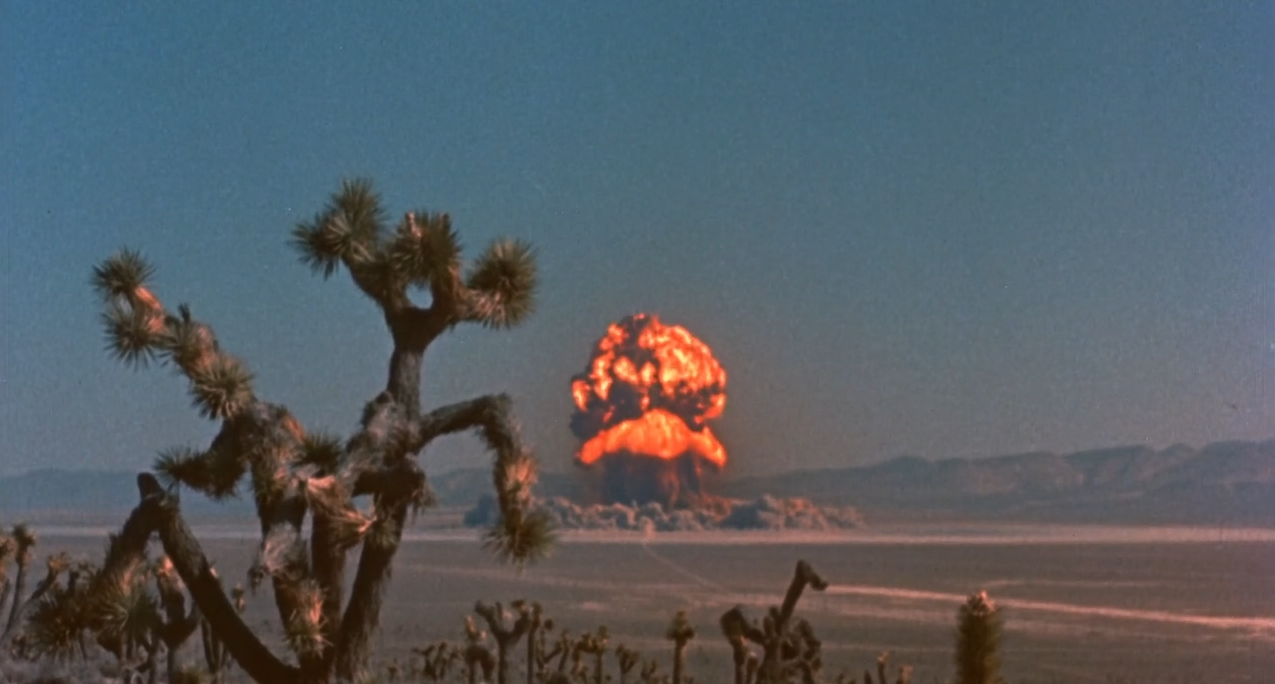
Godfrey Reggio, Koyaanisqatsi: Life Out of Balance, 1982
Sunrise. A hairy, male figure erects from his cave, stands on both of his feet and looks up to the morning sky. The night before it had, through its darkness, cast the soft light of a countless distant flickering dots. Having accepted his lack of knowledge on this phenomena, the freshly evolved Homo Sapien goes through his tasks of the day. Hunt for food for his female partner and their new born, avoid getting killed in the process by other prehistorical creatures, use deeply rooted instincts to survive. Eat or be eaten.
It took another six million years before the descendants of this figure could go through their days, without the constant fear of being eaten alive. As their physical appearance changed, so too would their daily routine alter. Their strong survival instinct would be blunted for more practical ones. We started to evolve our days around working, in order to experience leisure out of a vast range of activities. Sure the survival instinct can still be found in Homo Sapiens today, and will get millions of us out of life threatening situations for far more years, but it will not be triggered as frequently.
During this extended period, it is only in the last several thousand years that humans developed to beings who would rather disassociate themselves from nature, where man uses technology to shape and control his earthy surroundings to his will We know what caused the hairy figure to see flickering dots in the night sky. We even catalogued every single visible one, send vessels with ultra high definition cameras into space to document them and use the same cameras to look deep into the vastness of space. With this information we try to give meaning to our lives and seek for answers to questions that transcend our imagination.
But back on Earth, orbiting approximately 36.000 km above its surface, satellites equipped with similar cameras capture our rather destructive presence on the Blue Planet. Like an ant colony shaping their nest, we grew into an ever expanding society. We transformed millions of square kilometres of land into agriculture and vibrant, illuminating cities to serve billions of us. Surely these radical transformations we have made in the last several thousand years cannot be without consequences.
The evolved human presented itself to Earth as a geological force, polluting the seas and skies, the ground and what’s underground. Depleting, decaying, mutating and exhausting its sources on a massive scale. We do everything in our power to make our time on Earth worthwhile, but these developments are causing the slow but steady demise of our current ecosystems.
The planet’s carbon and nitrogen cycles, ocean chemistry and biodiversity are each products of millions of years of evolution. These states are being overwritten by human agents and have been radically and permanently disrupted by our activity. The Industrial Revolution in the middle of the 19th century already posed a big treat to the ecosystems, but it was the Great Acceleration that started a Machine that began the sudden and dramatic jump in consumption around 1950. This followed a huge rise in global pollution and the collapse of agricultural diversity. Despite having names of Greek shepherds (Polystyrene, Polyvinyl, Polyethylene), plastic, and the explosion in the use of it, would meanwhile infiltrate nature and act as a permanent, unwanted host in the next 25 years.
As many geologists process their data and map out our impact, a big sum of them have already established the damage: our soil has been affected in such a way that we catapulted ourselves into a new geological epoch. We gave it a name, and ironically enough glorified ourselves in it. The Anthropocene. A geological subdivision based on the figure of the Anthropos, being Greek for Human.
A working group of geologists, climate scientists, archaeologists, and others voted for the Great Acceleration to be a solid starting point for the era. Atomic testing in the 1950s and the changes that came with those events started an exponential growth in the pollution of our home planet. While the Anthropocene working group is asking the International Commission on Stratigraphy (ICS), the bureaucracy that governs geologic time, to recognise the Anthropocene as series (the stratigraphic equivalent of an epoch), the product of it is all too visible.
But the Anthropocene did not one day come falling from the sky through our carbon dioxide thickened atmosphere, and was certainly not drilled up from the soils of our planet by oil extractors. No, the Anthropocene has been lurking in the dark, visible enough for governments, politics and oil companies to both recognise and neglect the consequences. They had other plans and revolt against an epoch was not on their schedule. Numerous parties that call the shots benefit tremendously from our self-destruction. Parties that rather not talk about environmental degradation. But what if they did? What if they acknowledged their actions and actually endorse them? Could that mindset pass on to the masses who, through our economic systems, act on their behalf? Could this make for a new way of thinking about our epoch? In other words, is it possible to reshape our perception, and see the Anthropocene as a collective achievement of the modern Homo Sapiens?
This thesis will approach the Anthropocene in an unorthodox way and look for ways to glorify our actions that led to this rather sudden change.
Chapter One
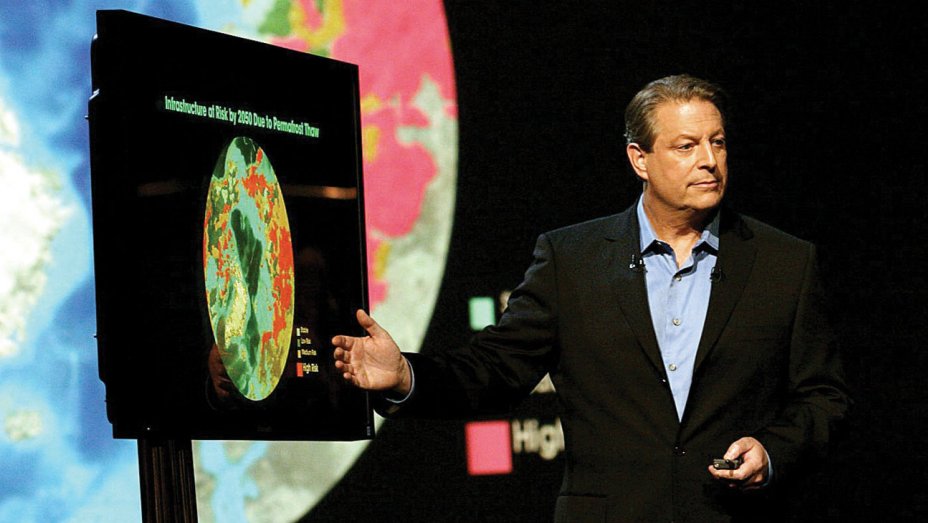
Al Gore, The Inconvenient Truth, 2007
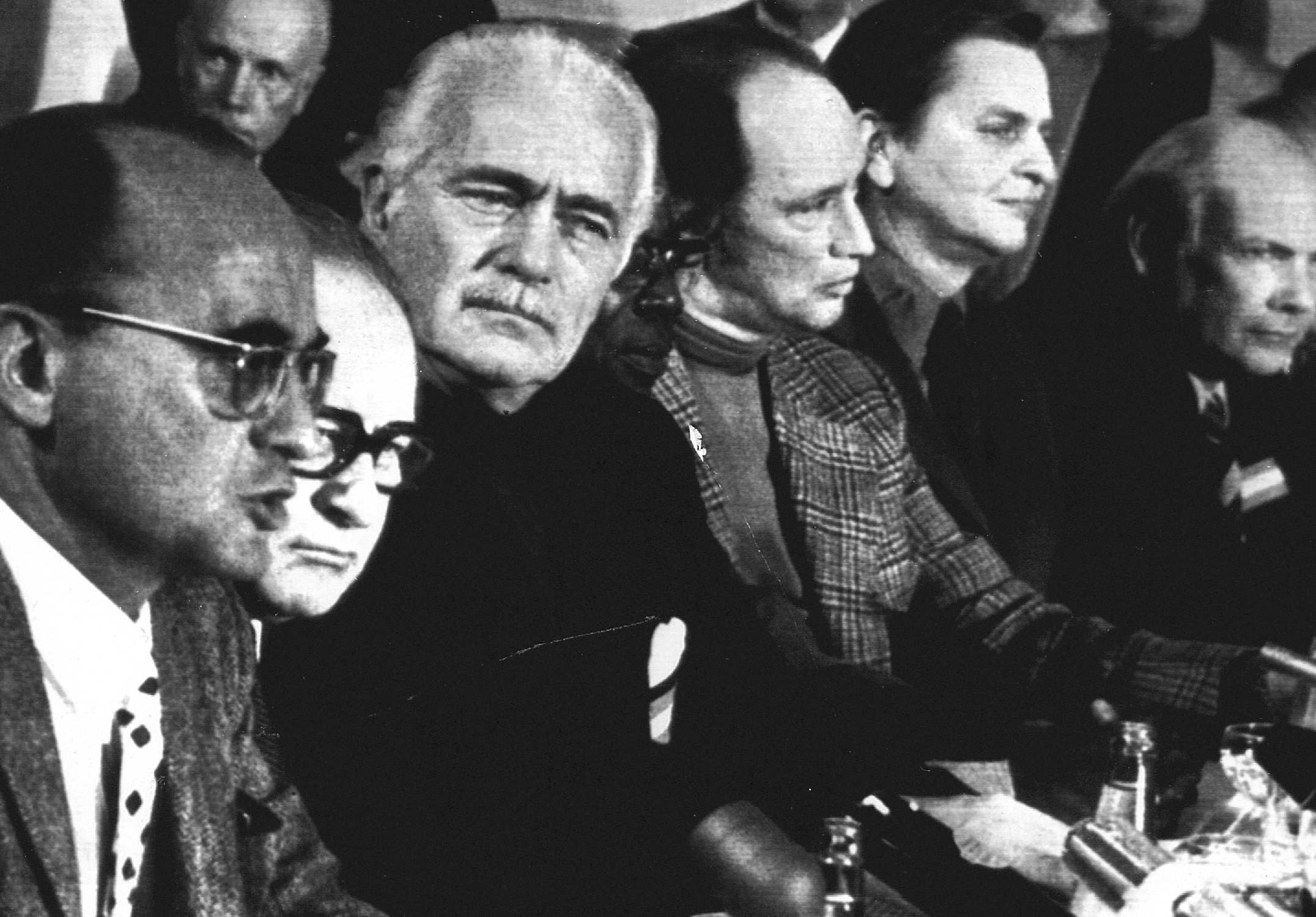
The Club of Rome: Donella H. Meadows, Dennis L. Meadows, Jørgen Randers, William W. Behrens III
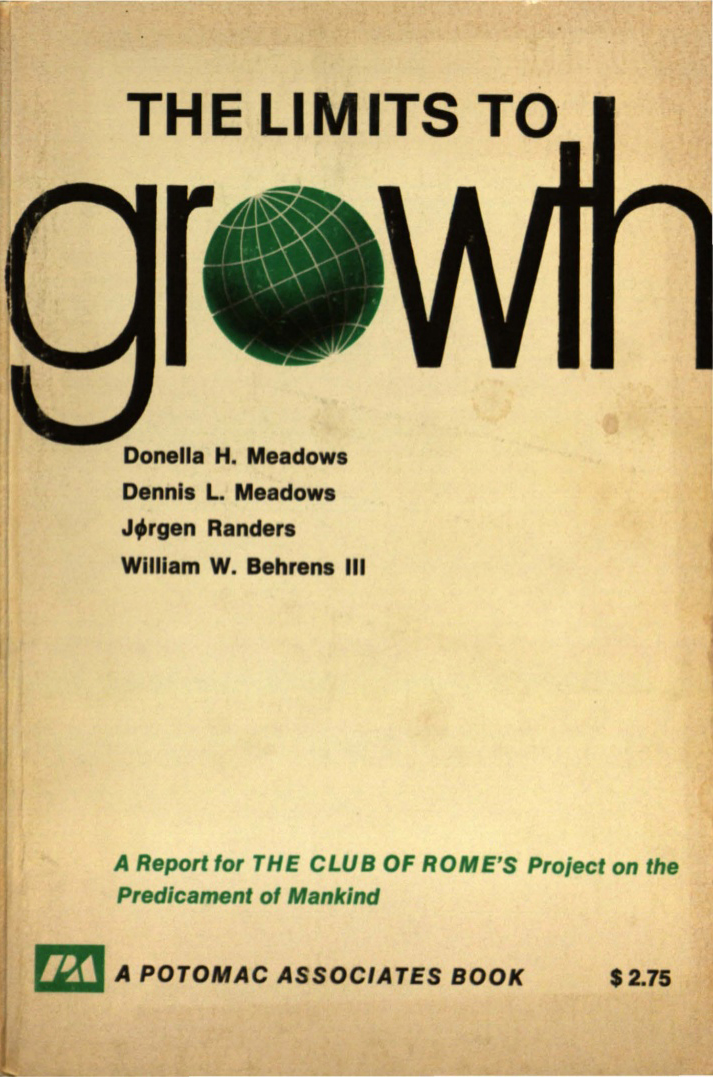
The Club of Rome, The Limits to Growth (1972)

Godfrey Reggio, Koyaanisqatsi: Life Out of Balance, 1982

Visualisation showing America's largest oil companies that support front groups denying the existence of global warming. Fisher Stevens, Before The Flood, 2016
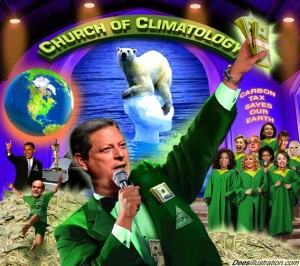
Digital illustration ridiculing Al Gore for his actions against global warming. Artist unknown.
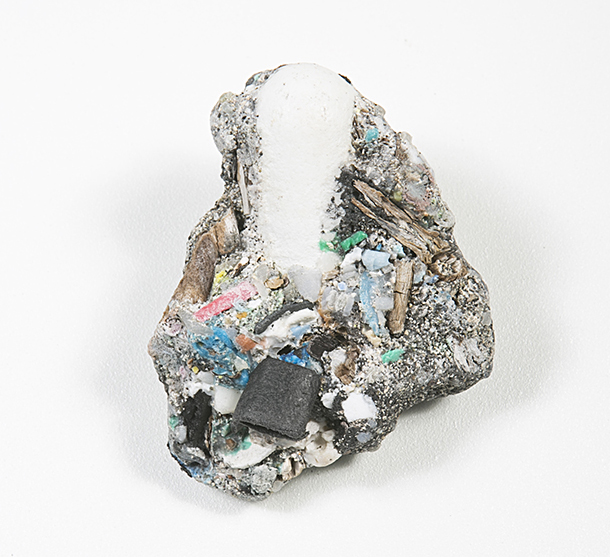
Around 2013, along the coast of Kamilo Beach, Hawaii, a new type of rock decribed as 'Plastiglomerate' was found. It consists of a mix of molten plastic debris and beach sediment, including sand, wood, and rock. Kelly Jazvac, Plastiglomerate, 2013.
[1] Yuval Noah Harari, Homo Deus: The History of Tomorrow (2015), Breaking The Law Of The Jungle, pg20
[2] Bruce Sterling & Jon Lebkowsky, Bruce Sterling & Jon Lebkowsky: State of the World (2016), published on well.com between January 3 and 21 January, 2016 [LINK]
[3] Donella H. Meadows, Dennis L. Meadows, Jørgen Randers, William W. Behrens III, The Limits to Growth (1972), published online on donellameadows.org [LINK]
[4] List of largest oil and gas companies by revenue, published on Wikipedia.com, last modified on October 10 2016 [LINK]
[5] Water and Climate change - How global warming impacts water, published on ucsusa.org [LINK]
[6] Jason Box, Dark Snow Project (2014—), darksnow.org [LINK]
[7] Species Directory, published on worldwidelife.org [LINK]
[8] Gaulle Gourmelon, Global Plastic Production Rises, Recycling Lags, published on worldwatch.org on January 28, 2015 [LINK]
[9] Donna J. Harraway, “Tentucalar Thinking: Anthropocene, Capitalocene, Chthulucene”, Trouble: Making Kin in the Chthulucene (2016), chapter 2
[10] Donna Harraway, Thinking: Anthropocene, Capitalocene, Chthulucene (2016), excerpt published on e-flux.com on September 2016 [LINK]
[11]
Bruce Sterling & Jon Lebkowsky, Bruce Sterling & Jon Lebkowsky:
State of the World (2016),
published on well.com between January 3 and 21 January, 2016
[LINK]
Which parties benefit from the Anthropocene and how?
I remember watching David Guggenheim’s documentary The Inconvenient Truth, presented by former vice president of the United States Al Gore, back in 2007. It was part of a monthly documentary viewing of my 2nd grade civics class. It was about the first time I personally heard of the phenomena ‘global warming’. Every time Gore said that word, the lower frequencies in the films score became more prominent, his voice more serious and the computer generated images backing up his story more threatening. Every thing became more, and according to Gore, it was more than enough. Climate change was real and it was about time someone addressed the problem.
This was the message that I got from the documentary. Oblivious as I was at the age of 14, I never dove deeper into the topic, that meanwhile affected my environment in ways I could not comprehend. But as the stream of campaigns went on and time progressed, awareness grew. Now, we are all too familiar with the visuals simulating what would happen to our continents, if all the ice sheets on Antartica and Greenland would melt and sea levels inevitably rose. The Netherlands would vanish completely and the continents structures would change drastically.
Of course the problem was already there when Guggenheim thought about making a documentary addressing it, since our awareness and the problem itself did not grow simultaneously. We were always a few steps behind. In his 2015 book Homo Deus: The History of Tomorrow, Yuval Noah Harari writes how, as a species, we have been able to control famine, plague an war since the dawn of the third millennium, and have to thank economic growth immensely for this. “Yet the same growth destabilises the ecological equilibrium of the planet in myriad ways, which we have only begun to explore. Humankind has been late in acknowledging this danger, and has so far done very little about it. Despite all the talk of pollution, global warming and climate change, most countries have yet to make any serious economic or political sacrifices to improve the situation. When the moment comes to choose between economic growth and ecological stability, politicians, CEOs and voters almost always prefer growth.”[1] With his eye on our days yet to come in the twenty-first century he continues “[…]we shall have to do better if we are to avoid catastrophe.”
Denial and Opposition
Harari argues that our cravings for economic growth, thus money, thus power, is preventing us from making drastic changes that could potentially restore a big amount or our wrongdoings, or at least slow down the degrading of the environment. In an interview between Bruce Sterling & Jon Lebkowsky[2], Sterling backs up Harari’s thoughts by addressing the Paris Climate Change Conference in 2015. “[…]because anyone who thinks they can run a country in these conditions should properly be gravely alarmed. However, since the Westphalian nation-state system was itself a major cause of global warming ("Never mind my national exhaust pipes, I'll make money with them while they empty over there in your 'globe'"), the political agreement can't make much difference. It buoys the self-esteem of the political class and its commentariat without actually cleaning the sky of two centuries of accumulated poisons.” He continues “Despite the accelerating mayhem, nobody will have any particular change-of-heart on the subject this year. Those of us who know about it have known as long as the oil companies did—since the early 1970s. Those who cashed in by denying climate change will be drowning and parching just like the rest of us, but they're never gonna admit their culpability; they'll just shrug and cite Scripture."
Already in 1968, current and former heads of state, UN bureaucrats, high-level politicians and government officials, diplomats, scientists, economists and business leaders from around the globe dealt with issues regarding the worlds economic system, climate change, and environmental degradation. Aurelio Peccei, an Italian industrialist, and Alexander King, a Scottish scientist, founded with this group of influentials the Club of Rome, and gained world wide attention with their 1972 report The Limits to Growth[3]. In it they explored how exponential growth interacts with finite resources (like fossil fuels). Concluding they proposed three possible future scenarios where two of the scenarios saw "overshoot and collapse" of the global system by the mid to latter part of the 21st century, while a third scenario resulted in a "stabilized world”. Similar interventions inspired non-governmental environmental organisation Greenpeace (established in 1971) and many more to raise environmental issues to public knowledge by taking direct actions. Their actions are still making actual changes today, and they continue to successfully influence parties both the private and the public sector.
But despite their effort and a lot changes in policies surrounding toxic emissions, the mindset of the ones that are calling the shots (oil companies, their CEOs and most governments) is not changing, and the masses are forced to participate in not doing so. On the same global scale capitalism does this by encouraging a consumption-driven society. The system expects us to be the kind of people who can barely control themselves, who buy on impulse, get themselves into enormous debt, who are compulsive shoppers and gullible consumers. People who will try anything at least once if they believe it will provide them with a small amount of pleasure—whether it is visual, musical, sexual or through food consumption. In a word, hedonists. In philosophy, ethical hedonism proposes the idea that all people have the right to do everything in their power to achieve the greatest amount of pleasure possible. This school of thought has a enormous influence on our current society. Our sense of entitlement and personal self importance makes us ignore the destruction we bring on our endeavours to seek pleasure. Meanwhile our species seems to have an universal impulse to experience freedom. The freedom to experience joy, the freedom to indulge as one wishes. All of this fuels our systems, and the ones who are steering the wheel of the vessel we call capitalism, see no reason to slow it down. Profit above all.
The Wonders of Fossil Fuel
Let’s discuss those influencers that, by denying climate change and their continues act of burning ancient old fossil fuels, manage to directly benefit from the decimation of our ecosystems. These fossil fuels are coal, oil and natural gasses stored in Earth’s crust. North Sea oil deposits are around 150 million years old and Britain's coal began to form 300 million years ago, hence the name fossil fuels given to the matters. Although humans used fossil fuel in ancient times (as far back as the Iron Age), it was the Industrial Revolution that led to their wide-scale extraction.
Today, the Saudi Arabian oil company Saudi Aramco, the Chinese Sinopec Limited, the Royal Dutch Shell company and the multinational American oil and gas corporation ExxonMobil are in the top ten list of largest oil and gas companies by revenue in 2015[4].These companies deplete natural resources at an alarming rate and sell them to companies that process them in everyday modern technology. Since we are so dependent of the technologies they provide, they make hundreds of billions of Euros each year. It is interesting to note that Rex Tillerson, CEO of ExxonMobil, at the end of 2016 was chosen by President Donald Trump to function as the United States’ new Secretary of State. Trump referred to Tillerson as the “embodiment of the American Dream”, after granting him with the states most important diplomatic title.
Fossil fuel interests are directly paying the pay checks of multiple influential heads and leaders all over the world. In the U.S. Congress alone, 116 of them are at the same time denying the existence of climate change, since it does not correspond with their political agenda. Where activists fight for a better lives for future generations, these people choose immediate, personal comfort through short term profit, above a sustainable planet for everyone.
But it’s not only the decisions makers who benefit from these actions. Those with access to modern technology, averse the idea of changing their lifestyle in order to reduce the damage done to those in less prosperous, far away countries. The Western world is fulfilling their modern day needs by endorsing the depletion of a finite fuel source. Again, we see that immediacy and our inadequate first-person perspective play a big role. There will not be direct changes if we were to stop depleting fossil fuels right now. But on a long term, we might be able to stop the planet from degrading. Since most of this is not visible to us individuals, we see no reason to make big sacrifices that could potentially obstruct our social lives and personal enjoyments.
Meanwhile, the world around us is quite literally falling apart. Let’s go through a few changes: Carbon dioxide (CO2) and methane emission caused by burning fossil fuels and agriculture practices, are gases that get trapped in the atmosphere. These are called greenhouse gases and contribute to the rising temperature of the Earth. This will quicken the melting of the ice sheets on the Arctic and Greenland. This process is already accelerated by the increased amount of forest fires, due to climate change causing warmer and dryer seasons[5]. Increasingly infrequent summer snowstorms will blow the forest fire soots over Greenland, causing the snow to actually appear black[6]. Just as black cars are hotter than white ones on a sunny summer day, dark ice melts much more quickly. Meanwhile, the sea floor carbon that is stored in the Arctic could be released into the atmosphere due to the warming of the globe. A small fraction of this carbon in our atmosphere can have catastrophic consequences for our species. Already the rise of sea water is proving to be a challenge for those living near coasts.
The list of species that are on the brink of extinction keeps growing[7] and because of human activity, during our lifetime we will see the extinction of a few more endangered animals. And then there is our plastic consumption. Recent studies show that 5.25 trillion plastic particles weighing a total of 268,940 tons are currently floating in the world’s oceans[8], threatening sea life on a global scale.
Revolt
The West has caused chaos all around and takes too little action to clean up after himself. In December 2015, world leaders of 195 countries came together and signed the Paris Agreement during the 21st Conference of the Parties of the UNFCCC (the same conference Sterling addressed in his conversation with Lebkowsky). The accord was created to help the planet restore to a more healthy state, starting from 2020. As many scientists concluded, the Paris Agreement was a step in the right direction, but more is to be done.
In her book Staying with the Trouble: Making Kin in the Chtulucene[9], professor and feminist sociologist Donna Haraway (also Distinguished Professor Emerita in the History of Consciousness Department and Feminist Studies Department at the University of California) goes against the use of the term Anthropocene. As a provocation, she summarises her objection to the term as a tool, story or epoch to think with. She concludes her list with: “Anthropocene is a term most easily meaningful and usable by intellectuals in wealthy classes and regions; it is not an idiomatic term for climate, weather, land, care of country, or much else in great swathes of the world, especially but not only among indigenous peoples.” She also addresses a statement from complex systems engineer Brad Werned, during the American Geophysical Union in San Francisco in 2012: “His point was quite simple: scientifically speaking, global capitalism “has made the depletion of resources so rapid, convenient and barrier-free that ‘earth-human systems’ are becoming dangerously unstable in response.” Therefore, he argued, the only scientific thing to do is revolt! What is required is action and thinking that do not fit within the dominant capitalist culture[…]”[10].
Haraway writes that the only scientific thing to do is revolt. What if to revolt is to go against what everyone already wants, but is not doing effectively enough? We want to see this planet flourish in ways it did before, but do not want to change our habits as long as we do not see short term progress. To revolt against our current mindset, is to make a U-turn and rethink the way we can look at this era. The West is tired of hearing he needs to change. We would rather spent this energy in pursuing activities of escapism in order to transcend the unpleasant realities of daily life. We want to feast, celebrate, party, be together and collectively turn a blind eye to all the bad things in the world. What better to do than to celebrate The Anthropocene! Do what we do best and unite the Western society to commemorate our wrongdoings.
“[…]we humans have a way of thinking our way out of wicked dilemmas, so there’s always hope.”[11]
[1] Yuval Noah Harari, Homo Deus: The History of Tomorrow (2015), Breaking The Law Of The Jungle, pg20
[2] Bruce Sterling & Jon Lebkowsky, Bruce Sterling & Jon Lebkowsky: State of the World (2016), published on well.com between January 3 and 21 January, 2016 [LINK]
[3] Donella H. Meadows, Dennis L. Meadows, Jørgen Randers, William W. Behrens III, The Limits to Growth (1972), published online on donellameadows.org [LINK]
[4] List of largest oil and gas companies by revenue, published on Wikipedia.com, last modified on October 10 2016 [LINK]
[5] Water and Climate change - How global warming impacts water, published on ucsusa.org [LINK]
[6] Jason Box, Dark Snow Project (2014—), darksnow.org [LINK]
[7] Species Directory, published on worldwidelife.org [LINK]
[8] Gaulle Gourmelon, Global Plastic Production Rises, Recycling Lags, published on worldwatch.org on January 28, 2015 [LINK]
[9] Donna J. Harraway, “Tentucalar Thinking: Anthropocene, Capitalocene, Chthulucene”, Trouble: Making Kin in the Chthulucene (2016), chapter 2
[10] Donna Harraway, Thinking: Anthropocene, Capitalocene, Chthulucene (2016), excerpt published on e-flux.com on September 2016 [LINK]
[11]
Bruce Sterling & Jon Lebkowsky, Bruce Sterling & Jon Lebkowsky:
State of the World (2016),
published on well.com between January 3 and 21 January, 2016
[LINK]
The 2nd Act

Japanese Kamikaze attack during the closing stages of the Pacific campaign of World War II, killed about 3,860 kamikaze pilots.
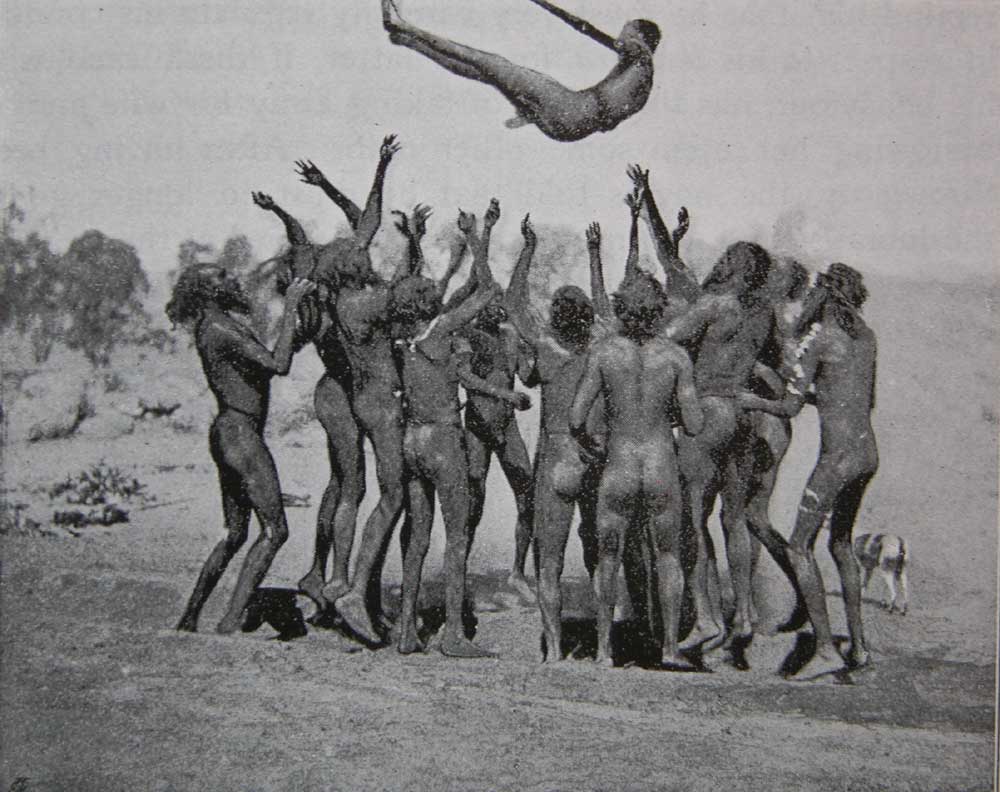
Alkira-Kiuma Ceremony or the Tossing Ceremony of the Aranda Tribe (1904). At age twelve, the boy's first initiation ceremony, tossed and caught by various male relatives

Consumers fighting over an LED televisions in a store on Black Friday

Merchandise communicating 'International Hug A Drummer Day' on October 10th, as popularised by social media

Traditional American Christmas diner. Similarly celebrated among countries that follow the Gregorian calender
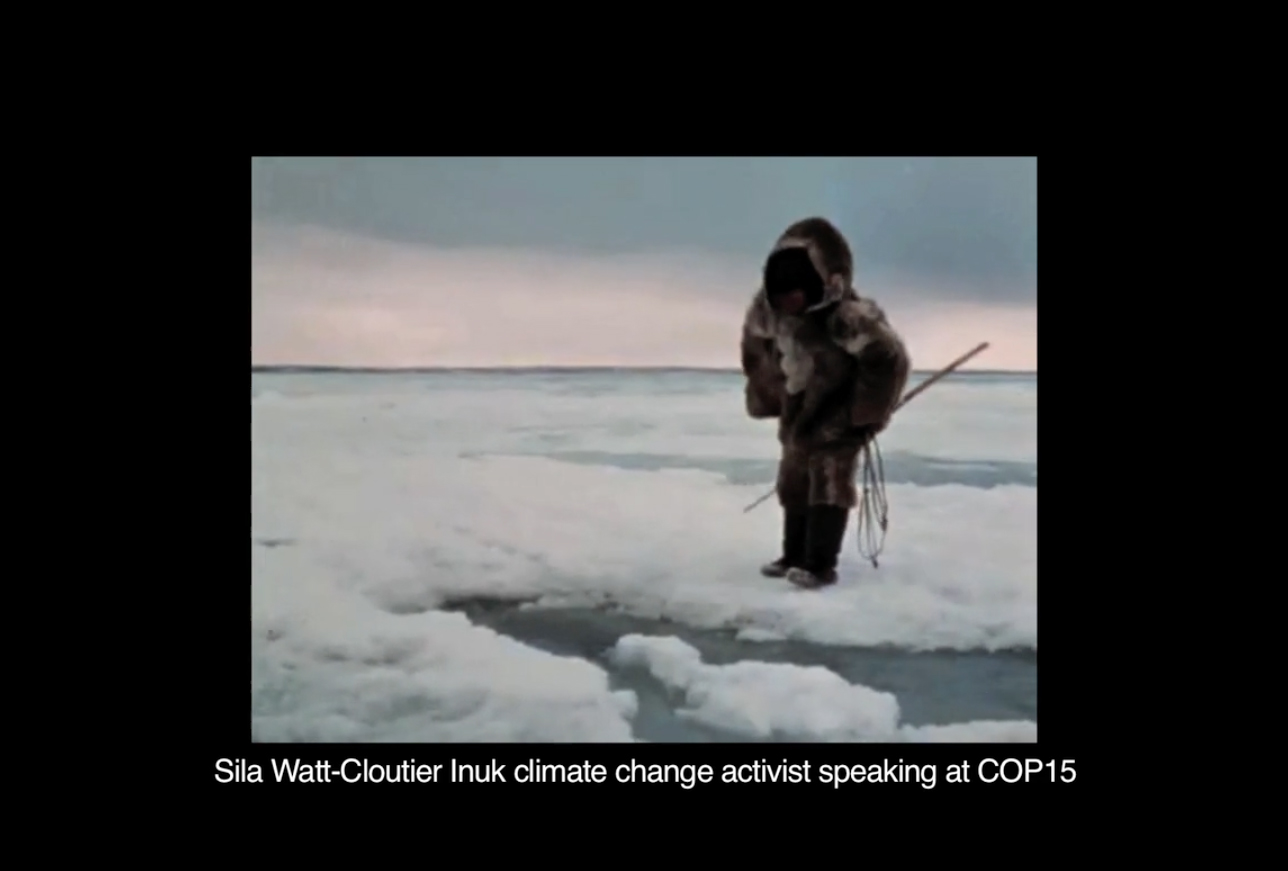
Susan Scuppli, Can The Sun Lie, 2015

Rebecca Blackwell, the devistation of Hurricane Matthew on Haiti crops, 2016

Tourist posing in front of the the Parthenon in Greece. A temple dedicated to the goddess Athena, constructed in 447 BC
[12]
The Invisible Committee, To Our Friends (2014), published on theanarchistlibrary.org on October 12 [LINK]
[13]
World Hearth Organisation, 7 million premature deaths annually linked to air pollution (2014) published on who.int [LINK]
[14]
Fisher Stevens, Before The Flood (2016), United States: National Geographic
[15]
ibid.
[16]
Times Of India, Unseasonal rain: Destroying farmers' spirits (2015), published on timesofindia.indiatimes.com [LINK]
[17]
Peter H. Gleick, Water, Drought, Climate Change, and Conflict in Syria (2014), published on the American Meteorological Society website on July 1 2014 [LINK]
[18]
Heather Whipps, Early Europeans Practices Human Sacrifice (2007), published on livescience.com on June 11 2007 [LINK]
[19]
Johan Huizinga, Homo Ludens (1944), Nature and the Significance of Play, pg22
[20]
ibid. pg14
[21]
Donna Harraway, Thinking: Anthropocene, Capitalocene, Chthulucene, excerpt published on e-flux.com on September 2016 [LINK]
What are reasons to celebrate the Anthropocene?
“At the apex of his insanity, Man has even proclaimed himself a “geological force,” going so far as to give the name of his species to a phase of the life of the planet[…]. For the last time, he assigns himself the main role, even if it’s to accuse himself of having trashed everything”. This is what The Invisible Committee, an anonymous author known for his or her social literature, wrote in the text To Our Friends[12]. It describes the notion where many authors in the past 15 years have scratched their heads over. The naming of this era shows once more the superior role we gave ourselves, in the geological timescale. One could argue that we lost all control when our emissions started to reign down on us in the form of climate change. But did we not, collectively, take full control and forcefully altered million of years of evolution in less than a hundred years? At the expense of nature, we managed to build an economy that provides heat, food, leisure and ever-improving modern technology for billions of us. I propose that the Anthropocene is a tremendous, if not the greatest achievement of the modern Homo Sapiens.
The Affected
But we must not forget that what could be considered an achievement by some, means death through climate change and air pollution for seven million people each year[13]. Indigenous people from Arctic regions like the Baffin Island in the High Canadian Arctic, each year see the actual changes that occur and have to face the problems that come with global warming. For example, not only is the ice melting, the quality of the ice is also decreasing. This makes it harder for inhabitants of these areas to move through the ice when they go out and hunt for food. The amount of food, the fish, seals, polar bears and narwhals living in these regions, is also declining. Rising water temperatures and the lack of ice for land animals makes it more challenging for the creatures (and thus the human inhabitants) to live in these environments.[14]
Another issue is that the gap between rich and less developed countries (with rapidly growing populations) becomes bigger, now that the wealthy are in a position to use renewable energies like wind and solar electricity and biofuels. As of today, 300 million people in India are without electricity. They use biomass as a source of energy. These people do not have access to coal (even though India being the third largest coal reservoir in the world[15]) and certainly not to renewable energy. It is the poor of India, Africa, Bangladesh, that see the immediate consequences of climate change. In March 2015, as a result of climate change, all of North India was struck by unseasonal rain. During five hours, six months worth of rain fell up upon the land. Approximately 10.6 million hectares worth of harvest was damaged and 80 farmers attempted suicide in this month alone[16]. Unseasonal rainfall like this could in the future pose a big treat to poor societies who are already struggling with food shortages.
Indirectly, climate change also triggers events that lead to the death of many more, as a result of complex interrelated factors. (For example the Syrian civil war that started in 2011)[17].
Yet as described in the previous chapter, the Anthropocene is a Western notion, a term easily usable by intellectuals in wealthy classes. The Earth, its coral reefs, animals and those (often more) affected by it in underdeveloped countries, will not benefit from mass depletion of fuels in the way the West does. Every day people suffer and die from actions that lead to our contentment through leisure and materialism. They are being sacrificed, if you will, for our happiness. They will not support those glorifying the (not so subtle) touches enforced on the planet. We will have to come to terms with the idea of excluding a big portion of our species, if we want to further participate in this spectacle of a movement.
The Ritual of Celebrating I: Sacrifices
In the evolution of human behaviour, the idea of human sacrifice has its roots in deep prehistory[18], and animal sacrificing is practiced within many religions around the world. Animals are offered especially in the context of ritual slaughter and sacrificial ceremonies. We have to remember that the biggest religion in the world, Christianity, is constructed on the image of a sacrificed man-god who said to have died to save mankind. Yet sacrificing is not always a religious act designed to appease the gods, divine the future or bring prosperity to those offering the sacrifice. It covers all situations which a human life is exchanged for a greater cause, and thus helping himself or his next of kin with the causing of a death. For example hunger-strikers that are prepared to die for their nationalism, whilst Kamikaze pilots used the verb Tokubetsu Kōgekitai (”special attack”) when describing their suicidal acts of flying their aircrafts into U.S ships and bases during World War II. These soldiers died for there emperor. The tradition of death instead of defeat, capture and perceived shame is deeply rooted in Japanese military culture. It was one of the primary traditions of the samurai life and the Bushido (“the way of the warrior”) code: loyalty and honour until death. In traditional culture, even today anthropologists interpret the executions of condemned men and women on death row in America as a form of sacrifice. This being the removal of evil and thereby cleansing the American society. The three coordinated suicide bombings in Brussels and Maalbeek, Belgium in March 2016, were also modern-day human sacrifices. In this case in the name of Islam, interpreted by The Islamic State.
The endangered animal species that are currently potential candidates for extinction (as a result of our actions) could as well be considered sacrifices in exchange for a greater cause.
Rituals of Celebration II: The Actors
So even though sacrifices are not always connected to ritual ceremonies, it is in these ceremonies where an element of play and “make-believe” is introduced. It is impossible to be fully convinced by the degree of seriousness in which they are performed. As Johan Huizinga confirms in his book Homo Ludens, “[…]the mental attitude in which the great religious feasts and savages are celebrated and witnessed is not one of complete illusion”[19]. This notion has to be understood when discussing ‘celebration’ in contemporary society.
The sense of make-believe has to be expressed by the actors, in order to convey the urgency of the feast to the beholders. It is only then that the spectators can participate in the act. Huizinga sketches this example by quoting Ad. E. Jensen from his book on the circumcision and puberty ceremonies in savage society. Jensen describes how the men seem to have no fear of the ghosts that are hovering above their fellow tribesmen during the feast. Which is a small wonder, seeing that these same men have had staged the entire ceremony: they carved and decorated the masks, wear them themselves and after the celebration, hide them from the women. At the same time, with noises, they announced the forthcoming of the ghosts, trace their footprints in the sand and blow the flutes that represent the voices of the ancestors. In short, says Jensen, "their position is much like that of parents playing Santa Claus for their children: they know of the mask, but hide it from them”. The men tell the women gruesome tales and tease about their visits to sacred grounds. During this entire process, at no point do the women give away, nor acknowledge, that they know perfectly well who is hiding behind the mask. “All the same they get fearfully excited when a mask comes up to them with minatory gestures, and fly shrieking in all directions. These expressions of terror, says Jensen, are in part quite genuine and spontaneous, and in part only acting up to a part imposed by tradition. It is "the done thing". The women are, as it were, the chorus to the play and they know that they must not be “spoil-sports”.” This element of make-believe we still pursue today in privileged modern society, especially during (inter)national holidays.
Rituals of Celebration III: The Show
Despite being a religious annual festival, the celebration of Christmas in the Western world is driven by capitalism. On average, an entire month is used to participate in the spectacle that is consumerism. People from all ages act happy (or at least project this onto one another), mothers and fathers portray the role of a perfect housewife or man and advertising presents the idea that through gifts, you can buy ones love. Six days after Christmas, in the Gregorian calendar, New Year’s Eve is celebrated with another festive event. On December the 31st, we conclude the year with social gatherings where people, eat, dance, consume alcoholic beverages and watch or light fireworks. If we confine ourselves to the (Western world) countries that follow the Gregorian calendar with twelve months in a year, we see that during New Years Eve they celebrate change, the mark of a new year. Although, in reality, nothing really changes. New Years Day (the 1st of January) is no different than the day before, but we present it as a moment of change and thus live by this psychological notion. People take the time to reevaluate their previous year and make promises to perform acts of self-improvement, in the form of New Year's resolution.
It is necessary to connect this idea of (make-)believe to our current ways of celebrating, in order to understand the necessity to glorify the Anthropocene. Where, during New Years Eve at the stroke of midnight, nothing physically changes, this epoch has brought significant change. If we are to recognise our ability to change Earth’s climate, we have to believe our impact is real. Through this believe, we are able to support the idea of celebrating this new era.
The basis of our lives are spent pursuing activities of escapism. Entertainment, arts, music, video games, recreation and celebration are all attempts to redefine the human condition through contemporary modes of entertainment. To transcend the unpleasant realities of daily life. Even though this is often portrayed negatively as avoidance of problems that require attention, it is a prominent feature in our daily lives. Huizinga touches upon this subject by addressing the temporary suspension of daily activities and events during ceremonial games in savage societies. “During the great feast of initiation when the youths are accepted into the male community, it is not the neophytes only that are exempt from the ordinary laws and regulations: there is a truce to all feuds in the tribe. All retaliatory acts and vendettas are suspended. This temporary suspension of normal social life on account of the sacred playseason has numerous traces in the more advanced civilizations as well.”
As advertising continues to trick us into thinking we need more reasons to celebrate, so too grows our demand to do so. Valentines Day, Mothers Day, Fathers Day, Thanksgiving and Black Friday are all Western traditions shaped by profit makers, with the most recent one being Cyber Monday. This term was created by marketing companies to persuade people to shop online on the day after Thanksgiving holiday in the United States. Despite being the strongest in the United States, is has grown internationally, and since 2005 has been observed in 17 Western countries. More of these consumer-based holidays and celebrations emerged over the past ten years. They are often popularised by social media and carry names like International Hug A Drummer Day (October 10), National Ugly Christmas Sweater Day (third Friday of December) and National Chicken Wing Day (July 29). Even the Eastern Slavic religious and folk holiday Maslenitsa, celebrating the arrival of Spring by eating and making pancakes that symbolised the sun, is now in most Western countries known as Pancake Tuesday or International Pancake Day.
A movement supporting the Anthropocene would endorse the idea of celebration as escapism, while at the same time be fully aware of the parties we thereby neglect. It will be a way to both escape the harsh reality of climate change and at the same time commemorate it for a sense of unity.
Rituals of Celebration IV: The Stage
There is an urgency to set this movement in motion in order to take full control of future geological alterations. The worldwide magnitude the Anthropocene has taken (intangible as it is), demands a collective force to engage it. If we manage to do so as a community, the performance it will set forth, will be an “actualization by representation”. The Western civilisation will use Earth, and all its places we inhabited and altered with advanced technology, as a playground for this feast. “The participants in the rite are convinced that the action actualizes and effects a definite beatification, brings about an order of things higher than that in which they customarily live. All the same this “actualization by representation" still retains the formal characteristics of play in every respect. It is played or performed within a playground that is literally "staked out", and played moreover as a feast, i.e. in mirth and freedom. A sacred space, a temporarily real world of its own, has been expressly hedged off for it. But with the end of the play its effect is not lost ; rather it continues to shed its radiance on the ordinary world outside, a wholesome influence working security, order and prosperity for the whole community until the sacred play-season comes round again.”[20]
In ancient Greece, plays and ceremonies performed in temples, resonated with the structures, and continue to do so 2800 years after their appearances. Today we see this in e.g. soccer stadiums. Here, years after the greatest matches of all time are played, fans from all over the world visit the stadiums, just get a sense of the atmosphere that players and supporters must have felt during the battles.
As Earth's soils and atmosphere physically project our actions in the form of global warming and all earlier mentioned changes, so too will it resonate on a metaphysical level for many more centuries to come. That is if we are to use the planet as a stage for this festive act. We are collectively responsible for changes made from the Industrial Revolution on, so we should approach the epoch as a collective. The scale we are dealing with is too big to blame a single individual for his choices. “Movements, not just individuals, are critical”, as Haraway puts it[21]. The capitalist system we are all supporting in the West (willingly or not), set the Anthropocene in motion. Ignoring the changes is no longer an option, so facing it by using the systems we are all too familiar with, should be a liberating experience. Uniting the West and by doing so set forth actual change.
[12]
The Invisible Committee, To Our Friends (2014), published on theanarchistlibrary.org on October 12 [LINK]
[13]
Wold Hearth Organisation, 7 million premature deaths annually linked to air pollution (2014) published on who.int [LINK]
[14]
Fisher Stevens, Before The Flood (2016), United States: National Geographic
[15]
ibid.
[16]
Times Of India, Unseasonal rain: Destroying farmers' spirits (2015), published on timesofindia.indiatimes.com [LINK]
[17]
Peter H. Gleick, Water, Drought, Climate Change, and Conflict in Syria (2014), published on the American Meteorological Society website on July 1 2014 [LINK]
[18]
Heather Whipps, Early Europeans Practices Human Sacrifice (2007), published on livescience.com on June 11 2007 [LINK]
[19]
Johan Huizinga, Homo Ludens (1944), Nature and the Significance of Play, pg22
[20]
ibid. pg14
[21]
Donna Harraway, Thinking: Anthropocene, Capitalocene, Chthulucene, excerpt published on e-flux.com on September 2016 [LINK]
Phase III

Data visualisation of CO2 and greenhouse emmissions 'pre-industrial'. Similar graphs are the only "tangible" objects that are able to tell differences measured on a global scale.

A pre-historic Neanderthal man as constructed on the basis of bones found. Photo: Getty Images
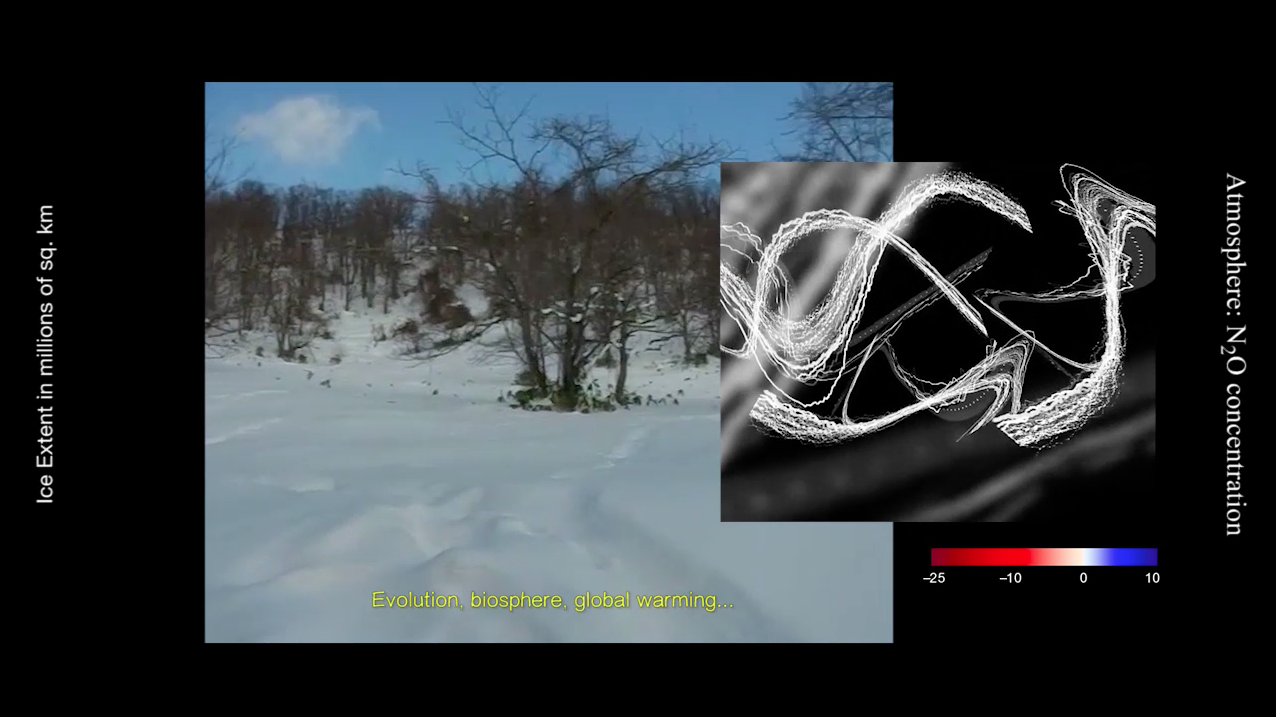
Jordy Ringeling, Intermezzo, video still, 2016

Jordy Ringeling, Intermezzo, fineliner on paper, 200 x 150cm, 2016
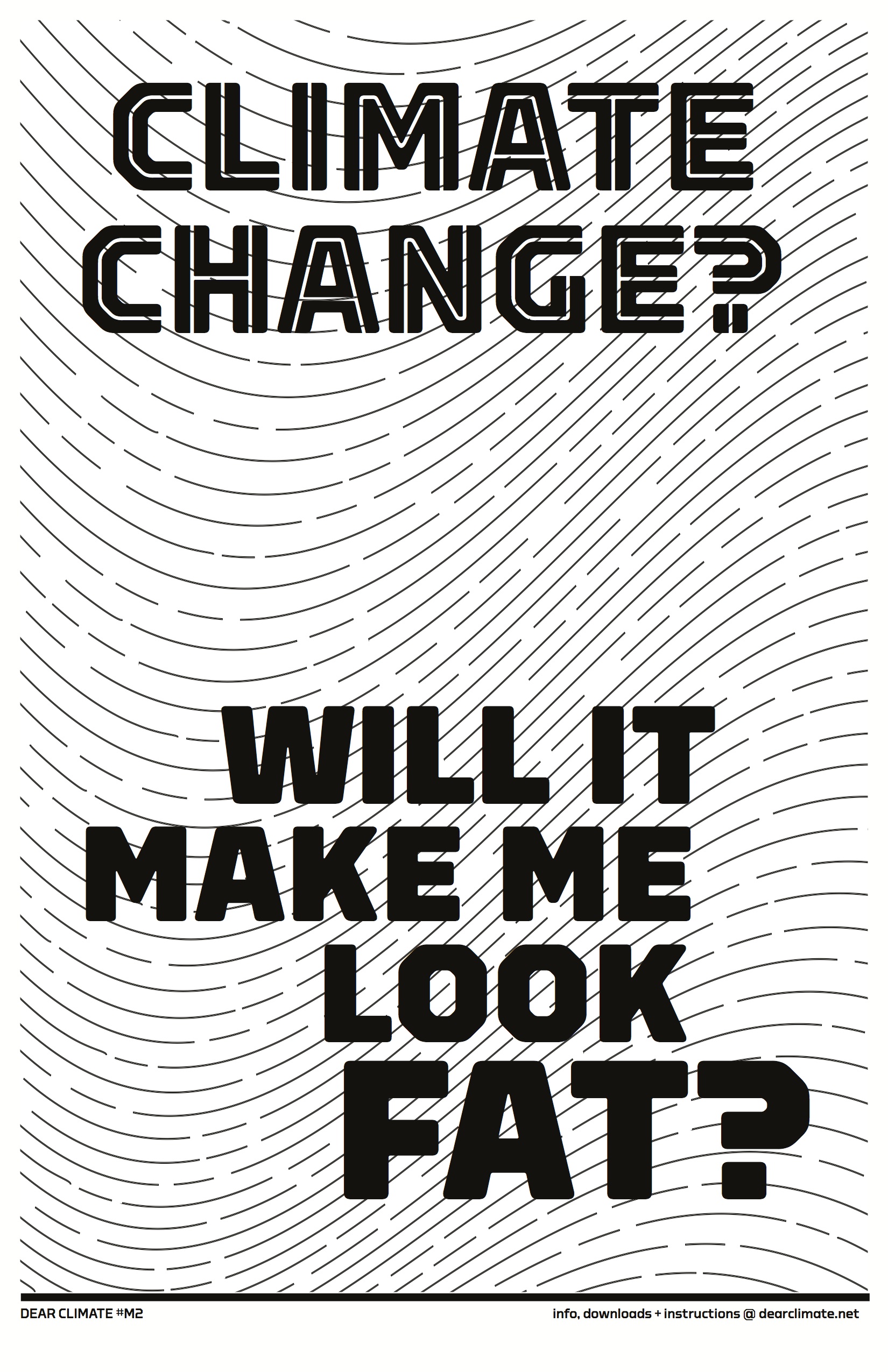
Marina Zurkow, Oliver Kellhammer, Fritz Ertl Una Chaudhuri, Dear Climate, 2012

Amy Balkin, Public Smog, 2014

Visualisation of meteorite impact that set the K-T extinction in motion
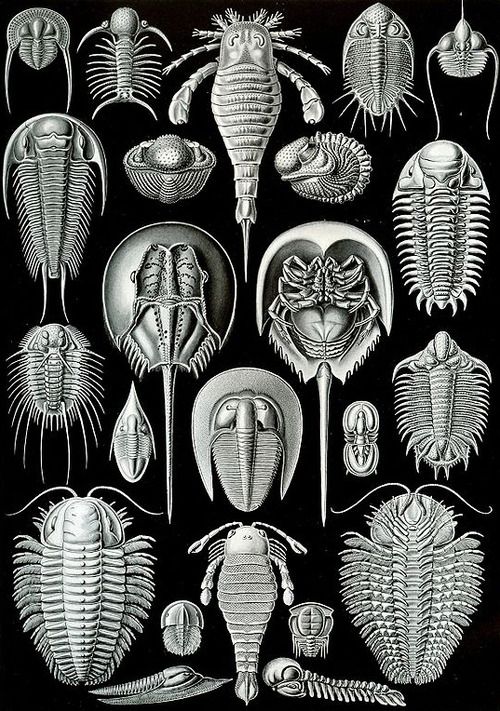
Etching of arthropods (as seen in found fossils) from Ernst Haeckel's Kunstformen der Natur, 1902
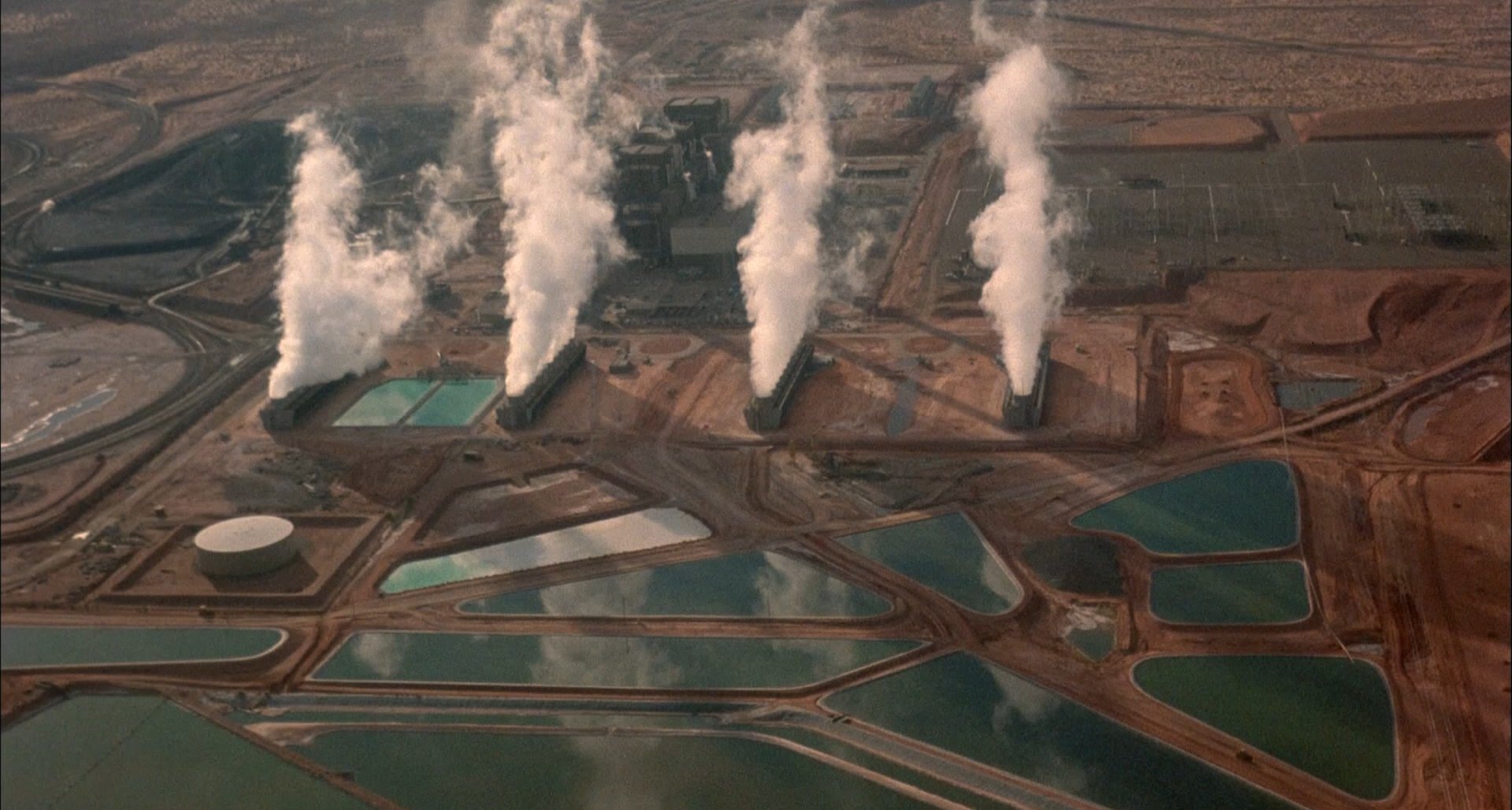
The glorification of industrialisation in Godfrey Reggio's Koyaanisqatsi: Life Out of Balance, 1982

The Church Of Scientology's 2016 New Year's Eve celebration

The Church Of Scientology's leader David Miscavige during one of the numerous speeches he gives each year

Logo of The Voluntary Human Extinction Movement

One of the myriad illustration portrayed on the website of The Volunetary Human Extinction Movement

Freek Vielen, Suzanne Grotenhuis, Harald Austbø and Tim David, Heimat 2, 2015

The Dutch King and Queen commemorating the victims of WWII during National Memorial Day on Dam Square, Amsterdam
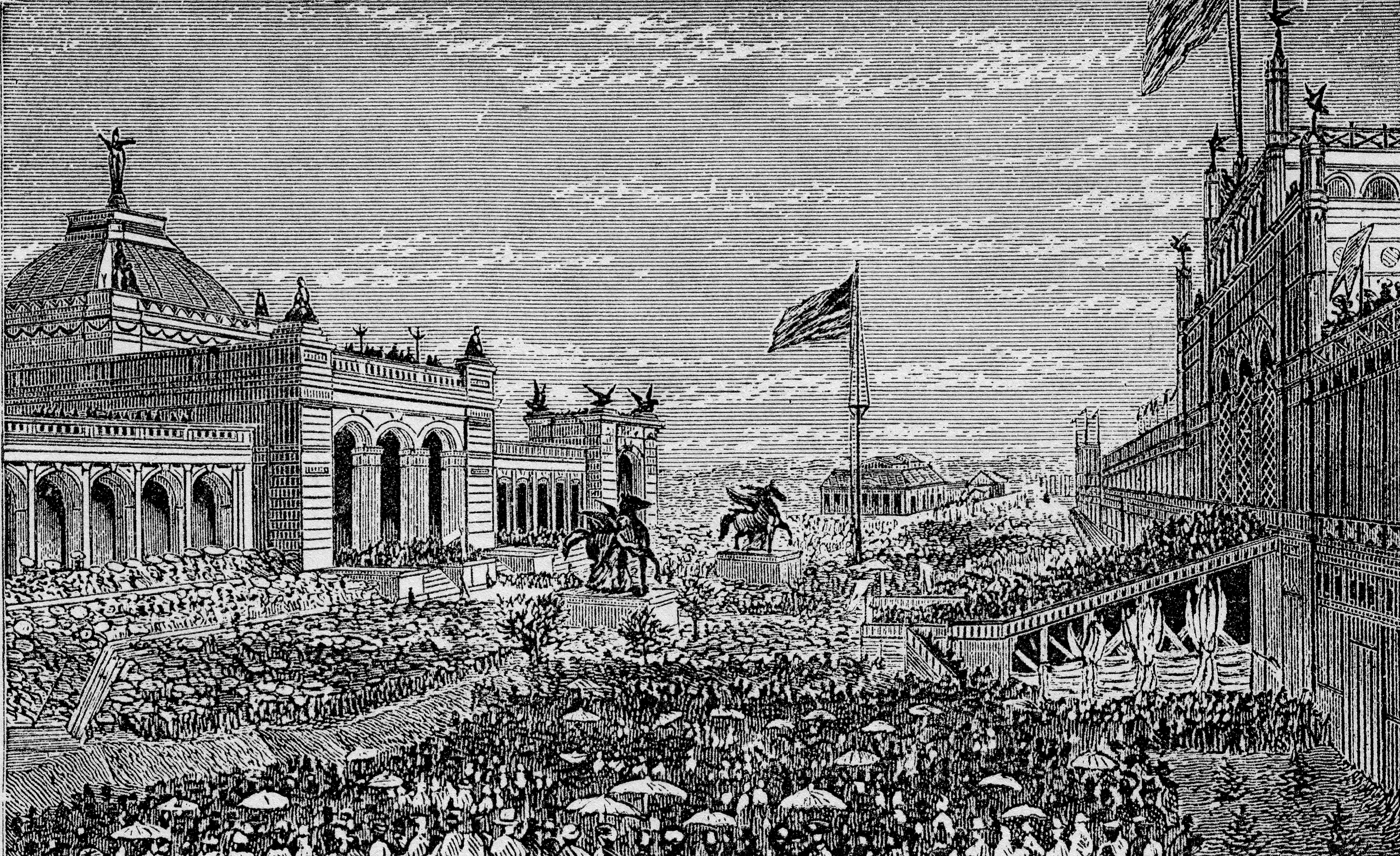
Illustration of the opening day of the Centennial International Exhibition of 1876

Exhibition view of The Fear Of Missing Out, 2016 in MAMA, Rotterdam by Jonas Staal
[22]
Timothy Morton, Hyperobjects: Philosophy and Ecology After the End of the World (2013)
[23]
Heather Davis, Etienne Turpin, Art In The Anthropocene, Encounters Among aesthetics, Politics, Environments and Epistemologies (2015), Critical Climate Change, pg5
[24]
Timothy Morton in VPRO Tegenlicht: Cultuurbarbaren, Alexander Oey, VPRO 2016
[LINK]
[25]
Heather Davis, Etienne Turpin, Art In The Anthropocene, Encounters Among aesthetics, Politics, Environments and Epistemologies (2015), Dear Climate, p. 317
[26]
Ibid. pg324
[27]
Ibid. Public Smog, pg341
[28]
Clive Hamilton, Utopias in the Anthropocene (2012), in a lecture for the Plenary sessions of the American Sociological Associations, transcription published on standford.edu [LINK]
[29]
Ibid.
[30]
Ulrich Beck, Climate for change, or How to how to Create a Green Modernity? (2010), Theory, Culture & Society pg254
[31]
Geologic Time Scale, long version, by Enchanted Learning, published on enchangedlearning.com [LINK]
[32]
Godfrey Reggio, Koyaanisqatsi: Life Out of Balance, (1982), United States: Island Alive
[33]
Tony Ortega, Scientologists: How Many Of Them Are There, Anyway? (2011) published on July 4, 2011, on villagevoice.com [LINK]
[34]
Motto of The Voluntary Human Extinction Movement [LINK]
[35]
About The Movement, by The Voluntary Human Extinction Movement, published on vhmet.org [LINK]
[36]
Jelmer Mommers, Wat gaat er verloren als een gletsjer smelt of een liefde uitdooft? Daarover gaat dit mooie toneelstuk (2015), published on decorrespondent.nl
[LINK]
[37]
Pimuk Rakkanam, Thailand Celebrates Monarch's Platinum Jubilee (2016), published on benarnews.org
[LINK]
[38]
See The 2nd Act, The Affected
[39]
Pears' Cyclopaedia (1978), 79th edition. Pears' Cyclopaedia is a one-volume encyclopaedia published in the United Kingdom by the soap brand Pears. Among others, the miniature encyclopaedia of general information had sections on various subjects such as cinema, classical mythology, current events, wine, astronomy, ideas and beliefs, gardening, medicine, etc.
[40]
See The 2nd Act, Rituals of Celebration III: The Show
[41]
FoMO, Fear of Missing Out. A contemporary social angst that is describes as ‘a pervasive anxiety that others might be having rewarding experiences from which one is absent’.
How could glorifying a geological epoch look like?
Today, it is for the first time that modern Homo Sapiens is able to celebrate the birth an new geological epoch. The oldest fossil remains of anatomically modern humans date back to 195,000 years ago. These humans were there to see the Pleistocene end the Palaeolithic Ice Age, and later mark the beginning of the Holocene, that lasted between 11,500 and 12,000 years. But the first serious attempts to formulate a geological time scale were made in the last 18th century. So it is our current period that gives our generation the unique privilege to consciously experience this transitional state.
Shaping the Anthropocene I
Before we can go into what shape or form the glorification of an epoch could have, we need to understand how humans could possibly envision an geologic era. The first people that encounter anything related to changes in our ecosystems are scientists, biologists and geologists. They travel the globe to collect samples from the land, and compare these to samples found in deeper layers of Earth that are therefore older. These samples are analysed and with advanced technology translated to data. This data then gets interpreted by computer software and visualised in legible graphs. Though, these are often not meant for the public, and the lines, abbreviations and data used in the fluorescent graphs are often gibberish for a layman. But so far, these graphs and visualisations are the only “tangible” things that tell us that there are different periods. Despite the visible changes in water levels and more extreme weather, we are not able to perceive these elements all at once. British philosopher Timothy Morton coined the term hyperobjects[22] to describe ‘objects’ like global warming; but also a black hole, the biosphere, our solar system or the sum total of all plastic material in the world. Long lasting products, too big or too many of them to all perceive at once. It is this element of scale and intangibility, that makes these topics challenging for artists, philosophers and writers to tackle.
In 2015, Heather Davis and Etienne Turpin wrote about art in the Anthropocene and in their preface express the following: “[…]the current sense of depletion, decay, mutation and exhaustion calls for new modes of address, new styles of publishing and authoring, and new formats and speeds of distribution. As the pressures and re-alignments of this re-arrangement occur, so must the critical languages and conceptual templates, political premises and definitions of “life.” There is a particular need to publish in a timely fashion experimental monographs that redefine the boundaries of disciplinary fields, rhetorical invasions, the interface of conceptual and scientific languages, and geopolitical interventions.”[23]
Morton often speaks about the role of art in relation to hyperobjects, and global warming specifically: "[…]arts is definitely not just propaganda. Art is actually coming from a place of not knowing everything. How can you totally know what this piece of music is about? How can you totally know what this painting is about? Artist are people who are ready for things to be a little bit uncertain, not knowing what the consequences of what they going to put into that art is. And that is exactly what we need. We need this massive, human, cognitive, political, psychic upgrade to deal with what we’ve done. So art is not just representing stuff, it’s actually helping us to go there."[24]. Morton refers to the myriad art projects that, more often active than passive, address problems surrounding this climate change. Where the passive projects are meant to create awareness and change publics mentality, in the latter, artists take the role of activists and actively try to communicate with decision makers.
Shaping the Anthropocene II: Dear Climate
With regard to addressing the public discourse, Marina Zurkow, Oliver Kellhammer, Fritz Ertl and Una Chaudhuri’s project “Dear Climate”[25] attempts to reposition the “paste-up aesthetic”, and intervene false impressions that emerge in debates on climate change. The project describes itself as a training program in the form of posters, podcasts, installations and a website. The project asks visitors (both online and during public exhibitions) to participate in addressing climate change as an entity. In a playful way, people ask climate change questions and apologise and make promises to it, in a hope to communicate outside of the typical political discours surrounding the topic. “[…]instead of crisis and catastrophe, “Dear Climate” animates the familiar and ordinary; instead of desperation and heroism, it fosters playfulness and friendliness. Dear Climate is after a conceptual nudge rather than a paradigm shift.”[26]
Shaping the Anthropocene III: Public Smog
In the mode of activism and engaging in an actual dialogue with decision-makers, American artist Amy Balkin launched in 2014 her ongoing project Public Smog[27]. Constructed on economic, political and legal activities, the intervention is an attempt to create a “clean-air” park in the atmosphere. These activities include purchasing and withholding emission credits in greenhouse gas markets (NOx and CO2), making them inaccessible to polluting industries. Fluctuating in scale and duration, the park have been successfully opened on three different locations between 2004 and 2014. Big billboards and advertisement campaigns all around the cities were installed to communicate the openings. The installation accompanying the project, exhibited in galleries all over the world, attempt to submit the Earth’s atmosphere for inscription on the UNESCO’s World Heritage List. Germany, as host to the dOCUMENTA 13 exhibition, was first invited to lead a coalition to the nomination process for inclusion in the World Heritage list. The combined number of 800,000 visitors were asked to petition their respective governments by postcard from within the exhibition. A total of 90,000 signed postcards were shipped to Germany’s Federal Environment Minister. In 2012, a letter of reply in response the to postcard petition confirmed that Germany would not lead a coalition for the inscription.
Close Ears, Open Eyes
In his talk Utopias in the Anthropocene, Public intellectual and Professor of Public Ethics Clive Hamilton quotes Ulrich Beck, and with it raises an unpopular opinion: “Let us close our ears, he tells us, to ‘depressing’ talk of catastrophe and shun the ‘negativity’ of ‘well-meaning green souls’. When the ‘world public’ wakes up to the fact that we are all in this together ‘something historically new can emerge, namely a cosmopolitan vision in which people see themselves... as part of an endangered world...’. He entertains the poignant wish that a golden era of ‘involuntary enlightenment’ will dawn.”[28]
I propose that the ‘involuntary enlightenment’ Beck refers to, is not realising that we need to change and actually obey to that realisation. We are already in the stage of realisation (most of us recognise global warming, and those denying it do so to please their political agendas). Acting accordingly would not be an enlightenment. The involuntary enlightenment would come from the opposition that is proposed with this suggested movement that celebrates the Anthropocene. To not fight back nor look away from the problem, but to embrace it. “[…] we must find ways to navigate it, to accommodate whatever it throws at us, to work out how to live on a planet less liveable.”[29]
Thus glorifying the Anthropocene starts by facing the problem with courage and dispose of all negativities surrounding it. Where Dear Climate was already heading in the right direction, the mindset we must adopt is one of prospect and bravery. Beck describes how escaping to the future or the past are both not progressive. We are exactly where we should be: “Few progressives have turned around to face the future; and one can see why, for the progressive who turns around can no longer be a progressive. In the Anthropocene, in addition to the past we seek to escape, now we have a future we want to avoid; so we are squeezed from both ends. Isn’t it easier to turn back to the past, to take comfort in the familiar kinds of suffering from which we can still aspire to free ourselves? ‘Give us back our past’, is the cry all denial.”[30]
Prehistoric Elimination
But for the sake of debate, let us look back to the distant past, and at how previous epochs were celebrated with pivotal events[31]. An estimated 4.5 billion years ago an unstable rock orbiting a star we now call the sun, was struck by one of the thousands of other rocks circling about in space. Through the sun’s gravitational pull, it still remained within its orbit, but the rocks surface started cooling down and the solidifying of the Earth's continental and oceanic crusts began. 1.5 billion years later, the now solid rock celebrated life by allowing the earliest organic structures to swim its oceans. As a result, oxygen began to form in the atmosphere. The Cambrian period came along (540 to 500 million years ago) and an explosion of life occurs. Though, due to climate change and the planet cooling down, this period came to an abrupt end, killing 50% of all animal families. The Ordovician period that followed, flourished with the first primitive plants on land. Again, this period ends in a huge extinction due to ice sheet forming. We fast forward to the heyday of the dinosaurs (146 to 65 million years ago), when Earth formed its continents to a modern-day look. Just as all the previous epoch, mass extinction ended the period. Yet this extinction was caused by an extraterrestrial intruder. An astroid (between 6 to 15km in diameter) hit Earth and its dust and debris thrusted into the atmosphere. It would have blocked most of the sunlight for months, and lowered the temperature globally. The so called K-T extinction obliterated the dinosaurs, 80-90% of marine species and about 85% of the land species. This event however, allowed the first Homo Sapiens to evolve and mammoths, mastodons, saber-toothed cats and other Pleistocene megafauna were there to feed the hungry humans. But this era would not be one without another mass extinction: large mammals and many birds were wiped out about 10,000 years ago. Cause: another long lasting ice age.
Since the dawn of the planet, each new epoch has been celebrated with the extinction of multiple species, allowing the birth of many others. So too, the future of the Anthropocene will cause the end of many animal and plant species. If we are to recognise the Anthropocene in the first place, we will have to come to terms with this tragic fact, and recognise these deaths as sacrifices that made the life we now have possible. For our own species to survive, we will have to fight the challenging changes upon our horizons. Many non-wealthy countries will have to endure death in various ways because of our past and future interventions. But like mentioned before, depressing talk about catastrophe is not going to help us in any way. It is gestures in the arts that can help us see beauty in the grandeur of our many worldwide alterations.
Gestures I: Glorification
In 1982, Godfrey Reggio released the experimental, documentary-style film Koyaanisqatsi: Life Out of Balance[32]. Without any characters, plot and narrative structure, the cult film is considered an ‘environmental masterpiece’. Through mesmerising shots (primarily presented in slow motion or time-lapse footage) the transition from old nature into a technological milieu, into mass technology of life is captured. The stunning cinematography that Ron Fricke made possible, is able to transform the images of destruction and industrial violence into a beautiful, captivating experience. Accompanied by Philip Glass's well celebrated original score, the film presents the beautification of industrialisation in contrast to nature. Yet there is no conflict between the two. The images are presented in a way that shows both differences and similarities between the two worlds, but also illustrates how they can coexist. It is gestures like these (the glorification of the unusual) that would be necessary to convince people to join a movement that supports a view that is frowned upon by environmentalists.
Gestures II: The Church of Scientology
We see this type of conviction reflect in a infamous group with unorthodox beliefs, a serious following and that is known for its use of grandeur presentations. The Church of Scientology, created by L. Ron Hubbard, was in 1993 officially recognised as a religion. Since its establishment they have encountered a lot of opposition and controversy. Their beliefs are based on Dianetics, a set of ideas and practices regarding the metaphysical relationship between the mind and body, created by L. Ron Hubbard himself. The Dianetics first surfaced in 1950 in his article Dianetics: The Evolution of a Science, published in the Astounding Science Fiction magazine. Scientology is known for their members paying incredibly large sums of money to participate in so called “auditing” sessions. These sessions teach that increased spiritual awareness and physical benefits are accomplished through these counselling. The religion is often ridiculed by outsiders and has been accused of being a business, often given to criminal acts, masquerading as a religion. But despite being one of the most controversial religious organisations, and there relatively small following (15,000 to 40,000 people[33]), Scientology comes across as a well established and powerful organisation. With their monumental and grandiose visual language, they are able to convey an overwhelming and seemingly empowering message. The church speaks to their believers from a high (with gold and silver decorated) pedestal. Their illuminating stages, bombastic visuals and empowering tone of voice flowing throughout every form of communication, carry convincing statements that dazzle their believers, and make them fail to see it as flat, Hollywood-like decor. With this they are able to obscure critical perspectives.
Their animated communication shows 3D visuals you would expect in the title sequence of the most recent Marvel superhero movie, while the voice-over is reminiscent to the voice announcing the movie in the trailer. They are able to translate the hyperreal renders to actual physical stage design, on a scale you would imagine the objects to be. Photographs of their current leader David Miscavige, surrounded by the almost ironic amount of reflecting objects representing a stage desk, make it look like the man is projected in an artificial environment, achieved by chroma key compositing. There presentations are influenced by a mix of Roman, Greek and Egyptian styles with a dash of Science Fiction. With the exponential growth of computer technology, so too does the physical and artificial scale of their visuals grow, with the pinnacle of their stage performances being the epic 2016 New Year’s celebration. While influential heads within the organisation gave speeches, the public beheld an enormous decorated stage and, as per usual, an 10 meter high portrait of (the now deceased) L. Ron Hubbard. Even the light spots on the side of the stage showed, metal, illuminating artificial beams of light blasting in every direction, aiming for the ceiling.
Apart from the objectionable acts committed by and within the organisation, the Church of Scientology is a perfect example of a movement that is able to convince people to participate in a way of thinking that is based on unconventional concepts. Their messages and grandiose visual communications claim to know the truth and have answers to all questions surrounding life. It is this type of dedication, conviction and knowledge of your audience weaknesses, that could make a nations and its inhabitants glorify an epoch.
Gestures III: The Voluntary Human Extinction Movement
An example of another group that is often ridiculed for their extreme ideas, yet I praise for their dedication to set forth an actual movement, is The Voluntary Human Extinction Movement (VHEMT). They consider themselves an environmental movement that calls for all people to abstain from reproduction, to cause the gradual voluntary extinction of humankind. With their motto being “may we live long and die out”[34], the group calls for phasing out the human race, allowing Earth’s biosphere to return to good health. “We’re not just a bunch of misanthropes and anti-social, Malthusian misfits, taking morbid delight whenever disaster strikes humans. Nothing could be farther from the truth. Voluntary human extinction is the humanitarian alternative to human disasters.”[35] By not reproducing, they call people to fight over-population and the defacing of the environment. This extreme view on saving the planet raises a good point. If only for being an actual alternative solution to the damage we have done to our surroundings by trying to grow as a species.
The dinosaurs who dominated the Earth for 180 million years did not choose to go extinct, when a meteor came blazing through the atmosphere, destroying most of life the Earth. They were products of millions of years of evolution, but never capable of making such conscious decisions. As described earlier, each new epoch introduced the extinction of many species, (most of the time) through climate change. Our new epoch also introduced climate change, but it will not make our species go extinct. Yet, if we are the cause of it in the first place, do we still deserve to be an actor in this play? If we are able to realise long-term solutions for the problems we caused, we might as well deserve another change. To live on this unpredictable planet is to adapt, and our history learns us that we are able to do so if we must.
Gestures IV: Commemorating
By taking action, environmental groups actively fight for the preservation of species and entire landscapes that are in danger of disappearing. But reality teaches us that entire plains of ice already vanished when the Earth began to heat up. Thus people are coming together to commemorate what has so far been lost, for commemorating is way to preserve the emotional bond one had with the subject. To never forget what has happend.
This element is key in Heimat 2, a Dutch theatrical performance, that describes the journey of Freek Vielen, Suzanne Grotenhuis, Harald Austbø and Tim David to Greenland. The group of actors travelled by boat to Iceland and flew from here to Nuuk, the capital of Greenland. Along the way they practices a self written requiem, that they performed upon arrival, standing on a glacier. A requiem for the melting ice world. The announcement of the play revealed they took the journey because they felt ‘it was time to say goodbye to something’[36]. But they admit they did not know exactly where they had to say goodbye to. Though, through the play, the group was able to raise thought-provoking questions. They confronted the audience with our own wondrous ability to always be occupied with things that seem important to us in that moment – our own personal experiences, our own lack of sleep, our own thought processes – while in the meantime we all together devastate the planet. The play asks the viewer to stand still and let our minds be occupied with something much more distant and intangible, yet is a result of our actions.
It is commemorating that lets us stand still at moments and events that we experienced, or maybe were not able experienced at all. For example, the Warsaw Uprising of August 1944 was a major World War II operation by the Polish to liberate Warsaw from German occupation. On August 1 1994, 50 years after the operation, Poland organised a unique ceremony that brought together representative speakers from all parties involved. They considered the commemorated event from different perspectives: the victim (Poland), the former enemy (Germany) and the former allies (England, USA, France and other countries). On the contrary, but similar in gesture, a National Memorial Day is held on the 4th of May in The Netherlands each year. It asks the entire nation to commemorate civilians and soldiers that died during and as a result of the Second World War. Each year, the National Monument on Dam square Amsterdam, functions as a stage for the event. Traditionally, the King and the Queen place memorial wreath on behalf of all citizen of The Netherlands and upon placing, the meaning of the 4th of May is explained in a speech. After two minutes of silence, a verse from the Dutch national anthem is played and representatives of the government and different organisations place more wreaths. Poems by young students are recited and the public is able to place flowers next to the monument. The commemoration is symbolised in flags throughout the country, that are hung half-mast on the same day, from 18:00 hours till sunset.
These commemorations are ways to make sense of the past and present at the same time. An entire nation or a specific group comes together to remember the fallen, being it relatives, deceased compatriots or inanimate objects. Though in the case of Heimat 2, the only people witnessing (or participating in) the commemoration, are the estimated 40 visitors of each show, that played in selected theatres throughout 2016 and 2017. The actors try to reach as many people as possible, but the message is only received by theatregoers. The approximately 90 minute long play carries a lot of different messages but can only go into each one briefly. A similar performance will not be able to carry a message as big as ‘celebrating the Anthropocene nationwide’, due to its limited audience and resources. People can be carried away and visibly moved by a performance or play, but in the end, the piece is not meant to be real. It is not mean to set forth an actual movement.
Neither does the tradition of national memorial days succeed in communicating the need to celebrate the Anthropocene in any way, for to commemorate something, it needs to be over. The Anthropocene has only been recognised for little less than two decades, and even though it already brought significant change, we do not know for how much longer it will flourish. In the Netherlands, the holiday after the 4th of May is called National Liberation Day, celebrating the liberation of the Netherlands from the German occupation in 1945. During this day they also reflect on the great value of freedom, democracy and human rights. This celebratory counterpart could be a way to first commemorate the damage done by the Anthropocene (the extinction of endangered animals and the societies in distress because of our actions) and celebrate our achievements and growth after. Both can be a way to create awareness for the topic by standing still and recognising the changes, our achievements and our shortcomings, instead of asking people to take direct action.
Gestures V: Anniversary
The introduction of this thesis establishes that the Great Acceleration marks the beginning of the Anthropocene. An enormous growth in population, economies, use of natural resources, transport, communication, knowledge, science and technology after the Second World War, rushed through the 20th century and has since not stopped growing. Today marks approximately 75 years after our atmosphere began to change drastically. If we follow the latin-derived numerical names for anniversaries, we would be celebrating the centennial anniversary of our new era in another 25 years, and just missed its septuagennial anniversary. This 70 year platinum jubilee would have been celebrated in 2010. To envision how an anniversary on this scale could have looked like, we can look at Thailand, that on June 19 celebrated the platinum jubilee of their monarch.
It was a national-wide festive event around King Bhumibol Adulyadej (Rama IX), the world’s longest-reigning living monarch. To commemorate the milestone, Thai officials and citizens held religious rites to bless and pay tribute to the 88-year-old monarch, the ninth king of Thailand’s Chakri Dynasty[37]. The Prime Minister Prayuth Chan-o-cha kicked off the celebration by offering food to Buddhist monks and presiding over a prayer ceremony by 770 Buddhist monks at the Temple of the Emerald Buddha. At the nearby Royal Ground, thousands of people dressed in yellow shirts joined to offer prayers to the frail king who, due through illness, was not able to appear in public.
Exceeding the national wide scale of an anniversary celebration was the Centennial International Exhibition of 1876, held in Pennsylvania, Philadelphia. It was the first official World Fair in the United states and celebrated the 100th anniversary of the signing of the Declaration of Independence in Philadelphia. The exhibition, formally named International Exhibition of Arts, Manufactures and Products of the Soil and Mine, welcomed in six months nearly 10 million visitors (equivalent to about 20 precent of the population of the United States at the time), and thirty-seven countries participated in it.
During the World Fair, many mass produced products and new inventions were on display. Some of the main attractions on display included sewing machines, typewriters, stoves, lanterns and guns and horse-drawn wagons, carriages and agricultural equipment. A well-known present feature on display was the arm and torch of the Statue of Liberty (at the time still a work in progress) and the world’s first monorail system was presented to the public. Fully functional and able to transport passengers in a vehicle secured on an elevated iron rail. The exhibition also featured many well known items such as Alexander Graham Bell’s first telephone, which was set up on opposite ends of the Machinery Hall, to demonstrate the transfer or human voice through wires. Among others the automatic telegraph system and electric pen by Thomas Edison were presented, and new technology like air-powered tools and mechanical calculators were on display. Besides machinery, visitors could also indulge new foods such as bananas, popcorn and Heinz ketchup.
A type of anniversary that ties back to commemorating something that has been are death anniversaries, that are a custom seen in several Asian cultures. Like a birthday, it is celebrated each year, but instead of on the date of birth, it is celebrated on the day on which a family member or other significant individual died. Although primarily a manifestation of ancestor worship, the tradition has also been associated with Confucianism, Buddhism and Hinduism. In Vietnam it is treated as a festive occasion, where members of the family gather. Traditionally, women of the family prepare food for all the family to eat, and sticks and incense are burned in honour and commemoration of the deceased person.
Each of the three above mentioned anniversaries have a different audience (people of the same nation, same interests or the same family), but all serve as an occasion for people to unite. It seems likeable that if a celebration around the Anthropocene was to be held, it would not be a solitary one. I will mention this once more, in Harraway’s words: Anthropocene is a term most easily meaningful and usable by intellectuals in wealthy classes and regions. It is these groups that would come together to celebrate. Through their shared responsibility, they are more involved in the changes than any less wealthy society, who will only see the consequences[38].
Yet, would the fortunate, like the 10 million visitors of the Centennial International Exhibition, praise the products and inventions that fossil fuels made possible? Or would they rather celebrate their actions and congratulate each other? Personal anniversaries, like birthdays and weddings, are traditionally celebrated by giving and receiving gifts. Perhaps presents should play a role in the event. The traditional and modern anniversary gifts in English speaking countries, as established in the Pears Cyclopedia[39], have material guidelines. The first five anniversaries materials are: paper, cotton, leather, silk and wood. The idea of buying gifts to congratulate each other with his or hers contribution to climate change, could tie back to factors like consumerism, discussed in 2nd Act of this thesis[40]. A certain irony is present in the idea that all material guidelines for anniversary gifts are natural resources that outdate the human existence. Perhaps, in order to honour their environment and the resources it provides, people should handcraft these gifts from natural resources. This way, a direct connection with the Earth and its resources is re-established, given that these elements in todays products are processed in such a way that they are unrecognisable (think plastic, glass, steel, ect.).
To celebrate the Anthropocene on its anniversaries, would mean that from now on, we would have to evaluate it each 25, 50,100 and (after its Millennial celebration) 1000 years. We could stand still at the changes that occurred within these timeframes, commemorate the lives and species we have lost and celebrate the technological advancements we have gained through fossil fuel burning, or perhaps an alternative fuel sources of renewable energy. Although, this would mean that we are not able to fully grasp the massive changes that occur each year. These changes are also not always the same. We need to evaluate them each year in order to see progressions or a decreasing in factors that will determine our future. We should rather evaluate (and celebrate) our alterations every year and through that, learn from mistakes made in the past 12 months.
It is a rather optimistic plan, given that the, as of December 2016, 194 countries that signed the Paris Agreement in 2015, already have their hands full with goals they set in 2020. Yet the celebration proposed in this thesis is not something governments should construct. It is a festive event for the users, profiteers and often unintended supporters of fossil fuel burning. Advertisement and FoMO[41] have proven to be important assets in the creation of contemporary holidays and celebrations. These could be utilised to trigger the target audience of this celebration, and tackle climate change from a positive perspective.
[22]
Timothy Morton, Hyperobjects: Philosophy and Ecology After the End of the World (2013)
[23]
Heather Davis, Etienne Turpin, Art In The Anthropocene, Encounters Among aesthetics, Politics, Environments and Epistemologies (2015), Critical Climate Change, pg5
[24]
Timothy Morton in VPRO Tegenlicht: Cultuurbarbaren, Alexander Oey, VPRO 2016
[LINK]
[25]
Heather Davis, Etienne Turpin, Art In The Anthropocene, Encounters Among aesthetics, Politics, Environments and Epistemologies (2015), Dear Climate, p. 317
[26]
Ibid. pg324
[27]
Ibid. Public Smog, pg341
[28]
Clive Hamilton, Utopias in the Anthropocene (2012), in a lecture for the Plenary sessions of the American Sociological Associations, transcription published on standford.edu [LINK]
[29]
Ibid.
[30]
Ulrich Beck, Climate for change, or How to how to Create a Green Modernity? (2010), Theory, Culture & Society pg254
[31]
Geologic Time Scale, long version, by Enchanted Learning, published on enchangedlearning.com [LINK]
[32]
Godfrey Reggio, Koyaanisqatsi: Life Out of Balance, (1982), United States: Island Alive
[33]
Tony Ortega, Scientologists: How Many Of Them Are There, Anyway? (2011) published on July 4, 2011, on villagevoice.com [LINK]
[34]
Motto of The Voluntary Human Extinction Movement [LINK]
[35]
About The Movement, by The Voluntary Human Extinction Movement, published on vhmet.org [LINK]
[36]
Jelmer Mommers, Wat gaat er verloren als een gletsjer smelt of een liefde uitdooft? Daarover gaat dit mooie toneelstuk (2015), published on decorrespondent.nl
[LINK]
[37]
Pimuk Rakkanam, Thailand Celebrates Monarch's Platinum Jubilee (2016), published on benarnews.org
[LINK]
[38]
See The 2nd Act, The Affected
[39]
Pears' Cyclopaedia (1978), 79th edition. Pears' Cyclopaedia is a one-volume encyclopaedia published in the United Kingdom by the soap brand Pears. Among others, the miniature encyclopaedia of general information had sections on various subjects such as cinema, classical mythology, current events, wine, astronomy, ideas and beliefs, gardening, medicine, etc.
[40]
See The 2nd Act, Rituals of Celebration III: The Show
[41]
FoMO, Fear of Missing Out. A contemporary social angst that is describes as ‘a pervasive anxiety that others might be having rewarding experiences from which one is absent’.
The Finale, or How We Conclude This Thesis

Bernie Wrightson's Frankenstein, 1983, after the original story of Mary Shelley, 1831
[42]
Thijs ten Brinck, Treinen volledig op windstroom, wissels over op groengas (2017) published on wattisduurzaam.nl [LINK]
[43]
Philipp Pattberg and Fariborz Zelli, Environmental Politics and Governance in the Anthropocene (2016), Anthropocene: Delusion, celebration and concern by Simon Hailwood, p. 47
[44]
Bruno Latour, Love Your Monsters: Why We Must Care for Our Technologies As We Do Our Children (2012), published on thebreakthrough.org [LINK]
As many would claim, this time is not one that is to be celebrated, for that would hinder critical perspectives, that could possibly pose a solution to climate change. Yet celebrating is what we did when we decided to name the epoch to the Greek word that translates to Human. And glorifying it, we did when we, very early one, saw an upward trend in CO2 emissions, yet all continued to take advantage of the miracles fossil fuel burning brought many of us. This however, did not stop environmentalists with various motives (but similar goals) to fight against everything the Anthropocene stands for.
The topic would not be one of great controversy, if we weren’t all negatively affected by it. In this thesis, the Western civilisation and their current social and economic positions are frequently addressed, when nominating a group that could possibly support the celebration of the Anthropocene. They are being compared with less wealthy countries and it may seem like the West has every reason to celebrate this era. Assuming, however, that the West will not be affected by climate change is wrong. The West will endure the same dangers as less wealthy countries, but the latter will be more affected by the consequences. The contrast lies in that the West, through wealth and advanced technology, is able to both benefit from fossil fuels and protect themselves against the by-product of those.
Possible Scenarios
Celebrating the Anthropocene, and with it our ability to master and control our environments, can be considered the final act of a play, in which we assigned ourselves the starring role. But, as mentioned before, it is most likely not an event celebrated by all of the human species. The feast will pay a tribute to fossil fuel extraction, by those who benefit most from it. Like The Voluntary Human Extinction Movement suggests, the beginning of this epoch should be celebrated like most other eras in the past were celebrated: with mass (human) extinction. It is, however, unlikely that this notion will click with the masses. We are too fond of life. Hedonists. But above all, survivors. Just like the 6 million year old hairy figure mentioned in the Introduction. An opposite movement, glorifying the Anthropocene, would appeal more.
The celebration will help many appreciate their current life conditions. A way to achieve this, is to compare their fortunate position with the unfortunate. As concluded in Phase III, Gestures IV: Commemorating, a moment or day of commemorating, prior to the festive event, could put the two in contrast. Lives and species will be lost at the expense of the happiness of others. Neglecting this would give no reason to create awareness through celebration in the first place. A celebration in the form of an annual anniversary could then give meaning to the myriad changes that occurred in the previous year through climate change. Like the Centennial International Exhibition, it could at the same time be a tribute to new inventions and technological achievements. For example, the fact that from January 1st, 2017 on, all electric trains in the Netherlands are fuelled by renewable energy supplied by Eneco[42], could be taken into account.
The arts has been, and will always continue to be, a way to shape, tackle and help understand the ungraspable. Like art project Dear Climate was able to humanise climate change, in order to approach the topic from a different angle, so too our view on this era must change if we want to get rid of all the negativity, and make way for different reasons to address the Anthropocene.
Species on Earth have been able to survive through their power to adapt when nature demanded them to. This time around, global warming demands us to invest in anything that could possibly lower our current rate of CO2 emissions. To get this message to across without the negativity that already surrounds the issue, we must utilise contemporary media, advertisement and other modes of communication through entertainment. We already saw this approach in art/activist project Public Smog, that used advertising structures like billboards to communicate the temporary installed “clean-air” parks in selected cities. Yet this movement should be nationwide, in the way Cyber Monday succeeded to be implemented in Western countries within only a few years. To get a sense of the scale and grandeur this feast should embody, in order to carry this (some might say) remarkable proposal, absurd gestures like those seen in the Church Of Scientology might be suitable. With advertising trying to find more creative, unique and eye-catching ways to stimulate its public, the absurd might function as a tool to communicate a feast of epic proportion.
Escapism through celebration keeps fulfilling needs to flee from reality, and this proposed event could complement this notion by addressing a serious issue with it.
However, in this conclusion, I must address a necessary element to understand what brought us in this position of environmental uncertainty. Simon Hailwood summarises this thought as: “It is important to remember that the environmental crisis is generally a matter of the unintended consequences of human activity in an arena – let us call it nature – that is highly complex and unpredictable. The relevant environmental facts do not generally concern the foreseen and intended consequences of courses of action pursued as part of a worked-out master plant to control Earth’s systems to produce the best overall consequences in terms of human interests.”[43]
The Anthropocene may mark the pinnacle of our stupidity, arrogance and naivety, but it should give hope that new eras always come with positive change for the strongest species. In this epoch we are the creators, engineers and agents that are capable of building a sustainable human future. If we let us take down by all negativity surrounding the issue, we will end up in a downwards spiral that will gives us no prosper future to strive towards to. There are ways to positively tackle the Anthropocene and its terrifying changes, through modes of celebration.
“Dr. Frankenstein's crime was not that he invented a creature through some combination of hubris and high technology, but rather that he abandoned the creature to itself.” – Bruno Latour[44]
(The Anthropocene Epoch has not been officially recognised by the International Commission on Stratigraphy and the International Union of Geological Sciences.)
[42]
Thijs ten Brinck, Treinen volledig op windstroom, wissels over op groengas (2017) published on wattisduurzaam.nl [LINK]
[43]
Philipp Pattberg and Fariborz Zelli, Environmental Politics and Governance in the Anthropocene (2016), Anthropocene: Delusion, celebration and concern by Simon Hailwood, p. 47
[44]
Bruno Latour, Love Your Monsters: Why We Must Care for Our Technologies As We Do Our Children (2012), published on thebreakthrough.org [LINK]
Acknowledgements
[44]
Lawrence & Michael Sartorius, The New Earth (1996) [LINK]
[45]
Michael Sartorius, The Art Of Good Government (1996) [LINK]
[46]
Author unknown, How To Become A Fruitarian (date unknown) [LINK]
[47]
Nada-Yolanda, Mark-Age (1995) [LINK]
[48]
Unknown author(s), The Shift Of Consciousness (2009) [LINK]
About this website
The design of this page was inspired by a series of self-help, alternative religion and conspiracy theory websites made in the late 90s/early 2000s. These websites are in no need of excessive design elements or conceptual references to illustrate their believes.[44][45][46][47][48]
Found in a very vivid and intriguing corner of the internet, the consistency in both visuals and verbal communication practiced by the creators of these websites, inspired me to strip this page from most unnecessary elements in order to fully rely and focus on the messages communicated.
The website opens with the Manifest for the Anthropos, which was generated from most used and meaningful words in the thesis. A randomizer constructed sentences from these and in the process a selected few communicated the core standpoints of the text. The manifest is a necessary element for understanding my perspective on this topic.
Acknowledgements
I started developing several small projects surrounding the topic of the Anthropocene in early 2016 during my time in Belgium, and I would like to thank my tutors from KASK Ghent for pushing me to further explore the topic in future projects.
I would also like to thank my tutors at KABK; Dirk Vis, Marjan Brandsma and Maarten Cornel for trying to position themselves in the topic and for keep asking questions, forcing me to propose actual solutions for the issues.
Text & design by Jordy Ringeling, 2017
[44]
Lawrence & Michael Sartorius, The New Earth (1996) [LINK]
[45]
Michael Sartorius, The Art Of Good Government (1996) [LINK]
[46]
Author unknown, How To Become A Fruitarian (date unknown) [LINK]
[47]
Nada-Yolanda, Mark-Age (1995) [LINK]
[48]
Unknown author(s), The Shift Of Consciousness (2009) [LINK]